For visitors to my website, this “Build of the Month” (BOTM) Series is meant to help those who are trying to get started in building their own Radio Controlled (RC) model aircraft.
If you are currently not an active builder, and you want to be, this webpage would be a great place to start. If you have an RC model aircraft that you would like to see featured in this section or feel others may find interesting, please let me know and I will make every attempt to find scratch build plans, photos, and maybe even a published build article, which I will then post in a future BOTM edition. Just send me an email @: Build of the Month.
Click on any link below to jump to that BOTM Edition
December 2024 — Mitsubishi A6M Zero
November 2024 — Bell P-39 Airacobra
October 2024 — Junkers Ju-52/3m
September 2024 — Playboy Senior
August 2024 — Das Ugly Stik
July 2024 — SIG RC-70 Tri-star
June 2024 — Great Planes Trainer 60
May 2024 — Bowlus Baby Albatross
April 2024 — RCM Miss Vintage
March 2024 — Pica Waco YMF Golden Age Biplane
February 2024 — F-22 Raptor “Foamy”
January 2024 — Pilot Quick Build Series Piper Cub J-3
December 2023 — RCM New Era III
November 2023 — RCM Big Bird and Big Bird 2
October 2023 — Douglas XTB2D-1 Skypirate
September 2023 — Ben Buckle Diamond Demon
August 2023 — Clancy Speedy Bee
NOTE - You can view all images in a “Spotlight Box” by simply clicking on any image.
Build of the Month WW-II Mini-Series - December 2024 Edition
I hope you enjoyed last months BOTM WW-II Mini-Series 2nd Edition on the Bell P-39 Airacobra model. If you have an RC model that you would like to see featured in this section or feel others may find interesting, please let me know and I will make every attempt to find scratch build plans, photos, and maybe even a published build article, which will then post in a future edition. Just send me an email @: Build of the Month.
Ok, now lets see what I have for the month of December 2024. Continuing with the “BOTM WW-II Mini-Series,” for the 3rd Edition we will move from the European Theater to the Pacific Theater. How about a fighter that was instrumental in bringing the United States into WW-II. So given these requirements, this 3rd Edition of my BOTM WW-II Mini-Series features the Mitsubishi A6M Zero, a fighter manufactured by Mitsubishi Aircraft Company.
The Mitsubishi A6M Zero might have played a more significant role than any other fighter in a single sortie during WW-II. This snub-nosed compact carrier-based plane was named the “Zero” after year zero in honor of Japan's first emperor's ascension to power 2,600 years before its launch. This outlines the long Japanese tradition as a nation skilled in combat and weaponry.
The Zero was incredibly nimble, well-equipped, and lightweight, with its designer Jiro Horikoshi using aluminum and plywood instead of steel as a weight-saving measure. A zinc-aluminum alloy was specially concocted for more stressed components, making this a meticulously designed plane, delivered in a timely manner by 1940, having gone into production in 1937. Its 14-cylinder 1,130 horsepower engine propelled it to a top speed of 350 miles per hour, and its armament consisted of two 7.7-millimeter machine guns and two 20-millimeter cannons, with its two notorious 132-pound bombs beneath each wing.
The Mitsubishi Zero will forever be remembered as the plane that was instrumental in bringing the United States into WW-II. On December 7th, 1941, under the attack signal, “Tora! Tora! Tora!” the Japanese launched their assault on Pearl Harbor, with the fleet of Zeros raining mayhem from above, strafing the docks with gunfire and devastating the U.S. Navy fleet with bombs. They quickly gained a reputation among the deadliest aircraft as the United States immediately declared war on Japan. Just three days later, the U.S. was also at war with Germany.
Also called “Reisen” or “Zeke”, the Mitsubishi A6M Zero served as a nasty shock to the Allied Forces. Being the primary naval fighter of the Imperial Japanese Navy, it was a legendary dogfighter with very long range and incredible maneuverability. It boasted of speed and impressive endurance. It was a formidable fighter with a kill ratio of 12 to 1. In the Pacific Theater, it could easily best its ground-based counterparts thus swiftly earning a legendary reputation. During WW-II, it became the Japanese aircraft with the most number built and produced. It wasn't just a symbol of their air superiority and power, it also paved the way for numerous innovations in naval aviation. Faced against the Grumman F4F Wildcat, Brewster F2A Buffalo, and the Curtiss P-40, it could out-maneuver them all. Yes, it was indeed a tough opponent – a very lethal fighter in dogfight. It also took part in various devastating attacks against the Allied forces.
Toward the end of the Pacific War, the large numbers of Zero fighters in service and their high maneuverability made them ideal for suicide special attacks, more popularly known to westerners of the day as “kamikaze”. Out of the 2,363 Japanese Navy aircraft that participated in special attack missions, 1,189 of them were A6M Zero fighters.
After the war, most surviving A6M Zero fighters were destroyed. A few of them were sent to the United States for testing. Many of them were abandoned across the various Pacific islands, rusting very quickly in jungle climates. Only about 13 were available for museum display today, such as the Zero fighter on display at Yushukan museum adjacent to the Yasukuni Shrine in Tokyo, Japan. Only a very small number are in flyable condition today.
- Actual Aircraft Specifications (A6M2 (Type 0 Model 21)):
- Crew: One
- Length: 9.06 m (29 ft 9 in)
- Wingspan: 12 m (39 ft 4 in)
- Height: 3.05 m (10 ft 0 in)
- Wing area: 22.44 m2 (241.5 sq ft)
- Empty weight: 1,680 kg (3,704 lb)
- Gross weight: 2,796 kg (6,164 lb)
- Max takeoff weight: 2,796 kg (6,164 lb)
- Power plant: 1 × Nakajima NK1C Sakae-12 14-cylinder air-cooled radial piston engine, 700 kW (940 hp) for take-off 710 kW (950 hp) at 4,200 m (13,800 ft)
- Propellers: 3-bladed Sumitomo-Hamilton constant-speed propeller
- Maximum speed: 533 km/h (331 mph, 288 kn) at 4,550 m (14,930 ft)
- Cruise speed: 333 km/h (207 mph, 180 kn)
- Never exceed speed: 600 km/h (370 mph, 320 kn)
- Range: 1,870 km (1,160 mi, 1,010 nmi)
- Service ceiling: 10,000 m (33,000 ft)
- Rate of climb: 15.7 m/s (3,090 ft/min)
- Guns: 2 × 7.7 mm (0.303 in) Type 97 aircraft machine guns in the engine cowling, with 500 rounds per gun
- 2 × 20 mm (0.787 in) Type 99-1 Mk.3 cannon in the wings, with 60 rounds per gun
- Bombs: 2 × 60 kg (130 lb) bombs or 1 × fixed 250 kg (550 lb) bomb for kamikaze attacks
Images of the Mitsubishi A6M Zero model and plans were found online @: Outerzone Mitsubishi A6M Zero Webpage.
RC MODEL CONSTRUCTION: The model featured this month was designed by Dave Platt and featured in Radio Control Modeler (RCM) Magazine May 1984. As we shall see, it turns out that just about all of the assets that the Zero possesses to make it a fine R/C model are the same inherent requirements that were demanded by the specification laid before the designers of the full sized ship. Before all else, it had to be light. This was to make sure it would be totally maneuverable and aerobatic; primary requisites for a dogfighter. These needs dictated a simple structure (and thus a straightforward outline), a large wing area coupled with a thick airfoil, and large control surfaces. In this last respect, the Zero's ailerons are perfect for a model: narrow chord (avoiding tip-stalls from high deflection angles at the tip) but long in span, giving them a lot of area.
The ideal layout for power with gentleness.
In just one respect the Zero comes up short; literally short. The nose moment is not as long as we would choose. The danger here is coming up with a rather tail heavy airplane needing much nose weight to correct. And, by extension, an overall heavy model. When Platt was laying out his Zero, he decided to design all structure aft of the wing spar as lightly as possible; not merely the tail end. Conversely, the nose end was designed like a tank. It worked. The original prototype, with O.S. Max .90, weighed 14-1/2 lbs. and balanced right without nose weight. Scratch builders will need to keep weight in mind; not how much there is, but where it is.
BUILDING: This section is not intended to be a step by step procedure for building but, rather, a brush across some of the highlights of the structural design. Certain parts were deemed necessary to make in fiberglass: the cowling, obviously; the gun hood because of its complex and subtle shaping; and the tail cone which again is a complicated shape and also needs to be hollow. The model is of conventional wood design. The fuselage can be skinned with large panels, or can be strip-planked. The latter method, though taking longer, produces a better, stronger result. In fact, with the CA glues we now use, the time taken to plank a body properly is little more than skinning, and only a fraction of what it used to be “pre-Zap.”
The plans show the flaps, which can be installed if desired or left off. While the cosmetic effect achieved by including them is undeniable, their functional usefulness in slowing down the ship in landing approaches becomes somewhat moot, since the unwavering stability during approach and slow landing speed could scarcely be improved. The plans also include details of the square tipped “Hamp,” or A6M3. Apart from the square tips, if you choose the -3, the cowl gills are not cut away and the multi-exhaust stubs are left off. The addition of a streamlined fairing around the drop tank attachment, and different gun arrangement complete the conversion.
The cutaway drawing shows the basic simplicity of structure. The Zero is a simple aircraft, and there was no call for sophisticated or complex design. Note that the entire cockpit bay area is left free of unwanted structure or radio components. This enables the builder to fit the available cockpit kit in place and have it look right. Along with the available Japanese feature pilot, an attractive cockpit area is achieved without special skills or experience.
Whether for serious competition or relaxed fun, this is a flying machine par excellence. Credit for this, as explained, lies with the Mitsubishi design team. The only maneuver the Zero won't do well is a knife-edge. This could be due to the somewhat excessive dihedral. But all the rest, look out! Rolls --- regular, slow, four-point or vertical --- a snap. Loops, Cuban Eights, touch 'n go's. Lovely solid inverted. Spins, no problem, recovery in 1/4 turn. Inverted spins too. When did you see one of these from a true scale model WW-II fighter? Come to that, when did a WW-II fighter ever do one intentionally?
- Model Specifications:
- Aircraft Type: 1/5th Scale Warbird
- Wing Span: 78-3/4″
- Wing Chord: 14-1/2″ (Avg.)
- Total Wing Area: 1,100 square inches
- Wing Location: Low Wing
- Airfoil: Semi-Symmetrical
- Wing Platform: Double Taper
- Dihedral each Tip: 4-5/8″ at W11
- Fuselage Length: 65″
- Stabilizer Span: 33″
- Stabilizer Chord (Avg.): 8-1/4″
- Total Stab Area: 255″
- Number of Channels: 8 - Throttle, Ailerons, Rudder, Elevator, Flaps, Retract Gear, Tank Drop, and Mixture Control
- Ready to Fly Weight: 232-320 oz. depending on power system selection
- Glow Fuel Engines: .90 - 1.5 2-stroke or 1.8 cu. in. Gas
- Electric Powered: Output of 1,800-3,000 Watts, 80-125 amp ESC, 4-6 cell 45C LiPo pack of 5,000mah.
The Mitsubishi A6M Zero RC model in this months edition can be built from a set of plans and article which are available @: “Outerzone”
Outerzone Mitsubishi A6M Zero Webpage.
I hope you have enjoyed this months selection, and just maybe, I have spurred some interest in trying your hand at building an RC model airplane.
Until next month - Keep the Balsa Dust Flying!!
Build of the Month WW-II Mini-Series - November 2024 Edition
I hope you enjoyed last months BOTM WW-II Mini-Series 1st Edition on the Junkers Ju-52/3m model. If you have an RC model that you would like to see featured in this section or feel others may find interesting, please let me know and I will make every attempt to find scratch build plans, photos, and maybe even a published build article, which will then post in a future edition. Just send me an email @: Build of the Month.
Ok, now lets see what I have for the month of November 2024. Continuing with the “BOTM WW-II Mini-Series,” for the 2nd edition how about an aircraft that was used by several nations during the war and has an unusual layout with the engine installed in the center fuselage, behind the pilot. So given these requirements, this 2nd edition of my BOTM WW-II Mini-Series features the Bell P-39 Airacobra, a fighter produced by Bell Aircraft for the United States Army Air Forces during WW-II.
The Bell P-39 Airacobra is a fighter produced by Bell Aircraft for the United States Army Air Forces during WW-II. It was one of the principal American fighters in service when the United States entered combat. The P-39 was used by the Soviet Air Force and enabled individual Soviet pilots to score the highest number of kills attributed to any U.S. fighter type flown by any air force in any conflict. Approximately 9,560 Airacobras were produced, about half of which were sent to Russia under the Lend-Lease program. Production models of the P-39 started arriving at Air Corps squadrons in January 1941; six months later the first Airacobras reached England. The British had planned to order 675 of the planes, but after disappointing combat experience, the order was canceled. Other major users of the type included the Free French, the Royal Air Force (RAF), and the Italian Co-Belligerent Air Force.
The Bell engineers wanted to mount the cannon so it would fire directly through the propeller shaft. This meant the engine would have to be located deep in the fuselage. This, in turn dictated that the machine would have a tricycle gear undercarriage -- the first such ever used on a production fighter. It had an unusual layout, with the engine installed in the center fuselage, behind the pilot, and driving a tractor propeller in the nose with a long shaft. Although its mid-engine placement was innovative, the P-39 design was handicapped by the absence of an efficient turbo-supercharger, preventing it from performing high-altitude work. For this reason, it was rejected by the RAF for use over western Europe but adopted by the USSR, where most air combat took place at medium and lower altitudes.
Together with the derivative P-63 Kingcobra, the P-39 was one of the most successful fixed-wing aircraft manufactured by Bell.
- Actual Aircraft Specifications (Bell P-39 Airacobra):
- Crew: One
- Length: 30 ft 2 in (9.19 m)
- Wingspan: 34 ft (10.36 m)
- Height: 12 ft 5 in (3.78 m)
- Wing area: 213 sq ft (19.8 m2)
- Empty weight: 6,516 lb (2,956 kg)
- Gross weight: 7,570 lb (3,434 kg)
- Max takeoff weight: 8,400 lb (3,810 kg)
- Power plant: 1 × Allison V-1710-85 V-12 liquid-cooled piston engine, 1,200 hp (890 kW) at 9,000 ft (2,743 m) (emergency power)
- Propellers: 3-bladed constant-speed propeller
- Maximum speed: 389 mph (626 km/h, 338 kn)
- Stall speed: 95 mph (153 km/h, 83 kn) power off, flaps and undercarriage down
- Never exceed speed: 525 mph (845 km/h, 456 kn)
- Range: 525 mi (845 km, 456 nmi) on internal fuel
- Service ceiling: 35,000 ft (11,000 m)
- Rate of climb: 3,805 ft/min (19.33 m/s) at 7,400 ft (2,300 m) (using emergency power)
- Guns: 1 × 37 mm M4 cannon firing through the propeller hub
- 2 × .50 caliber synchronized Browning M2 machine guns, nose-mounted
- 2 × .50 caliber Browning M2 machine guns one each wing
- Bombs: Up to 500 lb (230 kg) of bombs under wings and belly
Images above showing a completed Airacobra model and plans were found online @: Outerzone Bell P-39 Airacobra Webpage.
RC MODEL CONSTRUCTION: The model featured this month is a discontinued Gold Edition kit from Top Flite. The nice thing about the Gold Edition P-39 Airacobra is that although it is a highly detailed scale model with all the goodies, such as a realistic looking scale outline, built up tail surfaces, retracts and flaps, it is one of the few military aircraft that had a tricycle gear configuration. Those of you who have not yet mastered airplanes that are tail draggers will appreciate this model's great ground handling characteristics.
The plans are enormous — but they include dotted lines which indicate where best to cut them apart for ease of handling. Even better, the centerfold of the instruction booklet is a reduced copy which is easily detached and handy to have when the structure being built covers a detail you wish to see.
TAIL SURFACES: The tail surfaces are built first. Following the Top Flite method of construction produced the truly beautiful symmetrical and tapered surfaces which are so much more realistic than the usual flat sheet tail parts. Each rib has its own jig tabs to assure perfect alignment and allow sheeting the complete topside without a twist. The control surfaces all have sheet balsa cores to maintain the outline shape and 1/16" balsa strips which are glued in place then sanded to yield scale-like structures.
FUSELAGE: The basic construction of the fuselage consists of top and bottom halves built over the plan on a horizontal crutch. The engine (.61 upwards) is side mounted on the right-hand side. Using the excellent booklet photos for guidance, it should be straightforward to build the basic crutches..."
WINGS: These are built upside down over the plans. A full depth 1/8” balsa spar web is placed in position with all the ribs being slotted into position. Basswood spars are glued either side of the web, resulting in a strong, lightweight structure. A trailing edge web is also glued in place, which has an embossed line, which keeps the ribs at the correct height from the board. Again, an instruction manual with a photo and details on every piece of wood you glue, make it practically impossible to get into problems.
FLAPS: The Top Flite P-39 Airacobra is designed to incorporate scale split flaps; however, flaps are optional and not necessary for an excellent flying experience. Without flaps, the takeoff roll is a bit longer and the landing speed is slightly faster. If you do not wish to build the flaps, just disregard parts of the manual involving flap construction. The flaps are not difficult to build, but they do require good craftsmanship to fit and operate well. Flaps add nicely to the model's flight characteristics and scale appearance. Trim changes should not be needed when flaps are extended. The only exception is when they are deployed when flying at full power. The trim corrections are discussed later in the manual during radio set up. For flaps you will need one additional standard servo.
RETRACTABLE LANDING GEAR: You may build your P-39 Airacobra either with fixed or retractable landing gear. The instruction manual provides detailed instructions on how to install retractable landing gear available from Robart. They are pneumatic to simplify installation and hookup. You may choose to use another type of retract but it is up to you to make modifications required to fit them.
FLIGHT CHARACTERISTICS: During Top Flite flight testing they found no bad characteristics in this airplane. Take-offs were straight forward with good ground handling. The plane was airborne in approximately 100' [30m]. Once the plane is flying it goes exactly where you point it. Rolls are very scale-like with the low rate settings. At high rate it can roll more like an aerobatic sport plane. Power-off stalls were very soft and predictable with only the nose dropping in the stall. There was no tendency for the plane to tip stall. Landings were straight forward with or without the flaps. Without flaps you should maintain a bit more airspeed on your approach. With full flap deployment the plane slows very nicely and allows for a very soft landing. Unlike some models, the P-39 Airacobra does not exhibit any pronounced ballooning when flaps are deployed. A full flap landing will generally require a little steeper approach than an approach without flaps. Try setting up your approach from a slightly higher altitude than you might typically use for a landing without flaps. Deploy full flaps and gradually decrease the power. Keep the nose down and maintain a consistent approach to the beginning of the runway. When you are over the runway threshold pull off all power and the plane will settle in nicely to final touchdown. If you have never flown with flaps this is an excellent model to learn with. The extra effort to construct the P-39 Airacobra with flaps is well worth the effort when the model is completed.
The Great Planes Top Flite P-39 will provide the scratch builder with a superb sport-scale model and a head turner at the flying-field. This model will be a joy to build and sheer pleasure to fly. In the air the P-39 is a lovely sight, with low passes being the best as you can see the air-scoop and under-wing cannons
to good effect. Credit must go to Great Planes for their unusual Warbird and to Jim Sandquist, for the way the instruction manual is presented - it’s superb. I would not hesitate to recommend the P-39 to anybody wanting a different type of Warbird.
- Model Specifications:
- Aircraft Type: Sport 1/7th Scale Warbird
- Wing Span: 63″
- Wing Chord: 11-3/4″ (Avg.)
- Total Wing Area: 743 square inches
- Fuselage Length: 55-1/4″
- Stabilizer Span: 24-1/4″
- Total Stab Area: 164″
- Number of Channels: 4 to 6 - Throttle, Ailerons, Rudder, Elevator, Flaps, and Retract Gear
- Ready to Fly Weight: 8-10 lbs. depending on power system selection
- Glow Fuel Engines: .61-.75 2-stroke or .70-.91 4-stroke
- Electric Powered: Output of 1,200-1,500 Watts, 80 amp ESC, 6-cell 45C LiPo pack of 5,000mah.
The Bell P-39 Airacobra RC model in this months edition can be built from a set of plans and articles all from Outerzone which are available @: “Outerzone.”
Outerzone Bell P-39 Airacobra Webpage.
I hope you have enjoyed this months selection, and just maybe, I have spurred some interest in trying your hand at building an RC model airplane.
Until next month - Keep the Balsa Dust Flying!!
Build of the Month WW-II Mini-Series - October 2024 Edition
I hope you enjoyed last months BOTM edition on the Playboy Senior model. If you have an RC model that you would like to see featured in this section or feel others may find interesting, please let me know and I will make every attempt to find scratch build plans, photos, and maybe even a published build article, which will then post in a future edition. Just send me an email @: Build of the Month.
Ok, now lets see what I have for the month of October 2024. This month I want to start a “BOTM Mini-Series” that will feature famous WW-II aircraft over the next 6-8 months. For the 1st edition of this Mini-Series, how about something that has multiple engines. So given these requirements, the 1st edition of my BOTM WW-II Mini-Series features the Junkers Ju-52/3m, a transport aircraft that was designed and manufactured by German aviation company Junkers.
The Junkers Ju-52/3m (nicknamed Tante Ju (“Aunt Ju”) and Iron Annie) is a transport aircraft that was designed and manufactured by German aviation company Junkers. First introduced in 1930 the Junkers Ju-52 originally started out as a commercial endeavor and ended up being the workhorse of the Luftwaffe during WW-II. The Ju-52 entered service in the Luftwaffe as a make-shift bomber in 1935, however, its primary function during WW-II was as a troop and transport throughout Europe, Russia, and North Africa. Toward the end of the war the Ju-52's main function was that of a flying ambulance. Many Ju-52's saw service after the war as passenger aircraft, military transports and military trainers. As a general workhorse, the Ju-52 was invaluable: it was cheap and simple, easy to maintain in the field, could fly on only two of its three engines, had the ability to withstand crash landings with reasonable safety and could take serious damage. It had good STOL performance, robust construction, and interchangeable wheel/ski/float landing gear.
Development of the Ju-52 commenced in the late 1920s, headed by German aeronautical engineer Ernst Zindel. The aircraft's design incorporated a corrugated duralumin metal skin as a strengthening measure, which was a material design pioneered by Junkers and used on many of their aircraft, including the popular Junkers F13 1920s, the record-setting Junkers W33, and Junkers W34. The corrugation was a strength and weakness; it created strength but also higher aerodynamic drag; more importantly it allowed the practical use of aluminum before newer alloys were developed. In all, the Germans alone produced almost 5,000 Ju-52's during WW-II. After the war, the Amiot aircraft company produced another 400 for the French army to serve in the Indochina war; Spanish CASA even kept the plane in production since it was used as a multi-role transport by the Spanish air force until 1975. Today, only about 10 Ju-52's are still flying.
A New Generation — In April 2022, 90 years after the first flight of the Ju-52/3m, the Swiss Junkers Flugzeugwerke AG announced the successor model of the Ju-52, the Ju-52 New Generation. The Ju-52 New Generation will be able to carry 14 passengers and will have modern RED A03 engines and modern avionics. The market launch is not expected before 2025.
- Actual Aircraft Specifications (Junkers Ju-52/3m g3e):
- Crew: Two
- Capacity: 17 passengers
- Length: 19 m (62 ft)
- Wingspan: 29 m (96 ft)
- Height: 5.5 m (18.2 ft)
- Wing area: 110.50 m2 (1,189.4 sq ft)
- Empty weight: 5,720 kg (12,610 lb)
- Gross weight: 9,500 kg (20,944 lb)
- Max takeoff weight: 10,499 kg (23,146 lb)
- Power plant: 3 × BMW 132A-3 9-cylinder air-cooled radial piston engines, 541 kW (725 hp) each
- Propellers: 2-bladed variable-pitch propeller
- Maximum speed: 265.5 km/h (165.0 mph, 143.4 kn) at sea level 276.8 km/h (172.0 mph; 149.5 kn) at 910 m (3,000 ft)
- Cruise speed: 246 km/h (153 mph, 133 kn) maximum continuous at 910 m (3,000 ft) 209 km/h (130 mph; 113 kn) economical cruise
- Range: 998 km (620 mi, 539 nmi)
- Service ceiling: 5,900 m (19,360 ft)
- Wing loading: 83.35 kg/m2 (17.07 lb/sq ft)
- Armament: 1 × 7.92 mm (0.312 in) MG 15 machine gun or 13 mm (0.51 in) MG 131 machine gun in a dorsal position
- 1 × 7.92 mm (0.312 in) MG 15 machine gun in a semi-retractable dustbin turret
- Bombs: up to 500 kg (1,100 lb) of bombs
Images above showing a completed Ju-52 model and plans were found online @: Outerzone Junkers Ju-52 Webpage.
RC MODEL CONSTRUCTION: I must first caution that this build is NOT for someone just starting out in scratch building RC models. Graupner's 1/20 semi-scale Ju-52 was designed to be flown with three Speed 400 electric motors. A couple of changes that you may want to consider. You can use three small Hacker A20-16M outrunners or similar (the kit originally had speed 400's). Also use a 4-cell LiPo battery (the kit originally used an 7-cell sub-C NiCd pack). The three motors combined only pull 20 amps, so a 2,700mah pack will fly the model for longer than needed. Shortly cropped grass runways should not present a problem for the model. On a paved runway the Ju-52 lifts of in about 20-25 feet. You should also add washout to the wings as they are of a fairly steep taper. And of course aileron servos in the wings.
The wing is a conventional D-tube structure with spruce spars, cap strips and shear webs. Since the plans are from the Graupner kit and do not contain all rib profiles, you will need to use the one provided and then scale down for each of the other ribs in the wing. The scale ailerons hang below the wing and are actuated by a single servo via flexible cable push rods built into the wing. Each wing motor mounts to a plywood keel and is then covered with the plastic engine nacelle's. Take care to trim the nacelle's to get an exact fit to the wing profile; if you just follow the cutting line on the plastic you will probably end up with some small gaps between the nacelle and the wing. The simple wire landing gear is mounted by straps to a hardwood block in the wing.
The fully sheeted fuselage has flat sides and bottom with a curved top. Applying the top sheeting over the bulkheads and stringers can be made much easier if you first soak the sheeting in an ammonia/water solution to make it pliable, then pin it to the structure until dry, after which it can be easily glued in place. A clever design feature of the fuselage is that the battery tray is positioned behind the windshield so that the batteries can be removed for charging without taking off the wing. Simply remove the windshield and the batteries can be accessed through the opening in the front of the fuselage. The tail surfaces are built-up structures that are very light, yet quite stiff. The elevator and are sheet surfaces with the latter having three large lightening holes to reduce weight. The tail wheel wire mounts directly to the bottom of the rudder for steering.
The best part of flying the Ju-52 is the sound. Yes, I know, electrics are quiet, but if there are no engine models flying you can still hear the three props signing their beautiful synchronized song. And, unlike a gas model, there is no chance of an engine-out as all three electric motors work as one. Multi-engine flying without the engine-out landings, balky engines, trying to synchronize engines that don't want to run at the same rpm, and worrying if one engine will run out of fuel before the other — what more could you ask? When the juice does start to run down, all three motors stay in sync and set up for an uneventful final approach. Why would anyone want to fly a multi with anything but electric power?
- Model Specifications:
- Aircraft Type: 1/20th Semi-Scale Warbird
- Wing Span: 59″
- Total Wing Area: 403 square inches
- Fuselage Length: 39″
- Number of Channels: 4 - Ailerons, Rudder, Elevator, and Throttle
- Weight: approx. 56 oz.
- Wing Loading: 20.7 oz./square foot
- Glow Fuel Engines: N/A
- Electric Powered: Output of 200 watts each, 40 amp ESC, 4-cell 45C LiPo pack of 2,700mah.
The Graupner's Ju-52 RC model in this months edition can be built from a set of plans and articles all from “Outerzone,” and you can download them from:
Outerzone Junkers Ju-52 Webpage.
AeroFred Graupner's Junkers Ju-52 Webpage.
Want to try building a larger sized Junkers Ju-52? Then click on this next link at Outerzone for a 84″ span Junkers Ju-52, sized for three 0.20 two-stroke glow engines. Junkers Ju-52 (oz5874).
I hope you have enjoyed this months selection, and just maybe, I have spurred some interest in trying your hand at building an RC model airplane.
Until next month - Keep the Balsa Dust Flying!!
Build of the Month Series - September 2024 Edition
I hope you enjoyed last months BOTM edition on the Das Ugly Stik model. If you have an RC model that you would like to see featured in this section or feel others may find interesting, please let me know and I will make every attempt to find scratch build plans, photos, and maybe even a published build article, which will then post in a future edition. Just send me an email @: Build of the Month.
Ok, now lets see what I have for the month of September 2024. As I have stated in earlier editions, I tend to favor Vintage or Old-timer RC model airplanes. Keeping the build simple, resulting in an RC model airplane that is gentle and easy to fly are key factors for someone new to scratch build and learning to fly. And how about something that is a large size to make it easier to see at altitude. So given these requirements, this edition features the Playboy Senior, a well known RC model airplane designed by Joe Elgin.
Images above showing completed Playboy Senior models and plans were found online @: Outerzone Playboy Senior Webpage.
The Playboy Senior is one of the best performing early pylon designs. Originally designed in 1938 by Joe Elgin, the Playboy Senior still has excellent performance in the initial high climb rate and then having a lovely glide and the ability to make the most of any thermal lift that may be about. The Playboy Senior first appeared as a Cleveland kit in 1939. See their site at Cleveland Air Line for more details. Presented in this months edition, is a later version modified by Paul Denson and printed in RCM May 1975.
Today eight-five years later, the name “Playboy” almost seems up-to-date. From years of experience in Free Flight, indoor and outdoor rubber, a small Free Flight gas job evolved. As gassies went in those days it was relatively small, “junior size” I guess you would call it, but extremely successful as a flyer. It performed! When it was scaled up to 7 ft wingspan, kitted and christened with the, then ridiculous name “Playboy” it became a powered sailplane - a real floater. Flown with an O&R .60 up front it started a new page in the history of RC modeling. In the winter of 1939, the kit hit the market and Bill Schwab built the first Playboy Senior. He went on to win many contests, first in Cleveland, first in Akron, and sixth in the Chicago NATS. This is the plane that broke the world's record twice within 7 days. That was just the start, and she is still going strong today.
As an R/C trainer, the Playboy Senior has no peer. No matter what position you might get it into, just let go of both controls and she will get herself out of trouble. It is too inherently stable to stay in any position but right-side-up. Don't try to fly it inverted - it can get into that position but, since the airfoil is designed for lift, when inverted it lifts down and fast. It would decidedly be a way to get out of a boomer thermal, quickly.
RC Model Construction: The plans for the Playboy are pretty much self-explanatory, but perhaps a few words are in order - particularly having to do with the modification for R/C. Extremely important is the beefing up of the wing to stand the stresses placed upon it by movable control surfaces, after all, you are going to be tempted to do an occasional loop or snap roll, and the wing must be strong enough to take it. Even though the spars are spruce, and you have 1/8″ ply sheet dihedral braces, the main spars must be webbed with 1/16″ sheet vertical grained balsa out at least to the polyhedral break. For those who had not webbed the prototype, they snapped the wing just outboard of the dihedral brace pulling out of a dive before going into a loop. The bottom spar broke the glue joint between it and the dihedral brace and the top spar failed. If it had been webbed this would not have happened. Because of the pylon on top, entrance to the flight pack must be through the bottom. Finish the cross-grain planking on the front of the fuselage then remove the section designated as the equipment access door.
Don't forget to build the fuel tank area before planking the fuselage. The fuel tank may be removed through the access door, if necessary. Use the largest cylindrical fuel tank that will fit the space, in this case a 6-ounce tank. A .29 will run for about 15-20 minutes at half throttle on this much fuel. Make sure the 3/16″ square spruce vertical piece of the fin extends through the sub fin. Since it passes through the stab it will weld the tail assembly into a compact unit. Furthermore, if you decide to use floats it will be the hardwood point of attachment for the rear float. If there is even a small chance that you intend to fly the Playboy Sr on floats, install the 3/8x1/2″ in hardwood cross member in the fuselage before planking - it may be added later on but is difficult to do so.
- Model Specifications:
- Wing Span: 80″
- Wing Chord: 10.75″
- Total Wing Area: 750 square inches
- Horizontal Stab Span: 27.625″
- Horizontal Stab Area: 175 square inches
- Fuselage Length: 40.75″
- Number of Channels: 3 - rudder, elevator, and throttle
- Weight: approx. 48 oz. with glow engine
- Wing Loading: 9.23 oz./square foot
- Glow Fuel Engines: 0.29 - 0.35 two-stroke
- Electric Powered: Output of 600 to 700 Watts, 60 amp ESC, 4 cell 45C LiPo pack of 4000mah.
Here is a link to an excellent build log: “Playboy Senior Build”. This build log has lots of great images that will take you step-by-step through the construction of the Playboy Senior. The finished model is powered by a OS 0.26 four-stroke with a 10x6 prop. The build is a 3-channel RC, elevator, rudder and throttle. A very well done build log. The model in the build log is built from a great set of plans and article which are available from: “Outerzone”
Outerzone Playboy Senior Webpage.
Want to try building the Playboy Senior but not as a scratch build? Then click on this next link for a 80″ span Playboy Senior from Hanger One Kits, sized for 0.35 to 0.60 two-stroke glow engines. Their laser cut kit will give you many enjoyable hours of building and flying. Stable enough to be a relaxing Sunday flyer, and it's under-cambered airfoil making it a great performer in thermals. Playboy Senior 80". Another source for a Playboy Senior short kit is available from Ben Buckle Vintage Kits at this next link: Playboy Senior. Their Playboy Senior short kit includes pre-cut wing ribs, tip shapes and formers, balsa strip, sheet and block parts, undercarriage wire, hardwoods, a hardware pack and full-size plans. Everything needed to build the basic airframe of the model.
I hope you have enjoyed this months selection, and just maybe, I have spurred some interest in trying your hand at building an RC model airplane.
Until next month - Keep the Balsa Dust Flying!!
Build of the Month Series - August 2024 Edition
I hope you enjoyed last months BOTM edition on the SIG RC-70 Tri-star model. If you have an RC model that you would like to see featured in this section or feel others may find interesting, please let me know and I will make every attempt to find scratch build plans, photos, and maybe even a published build article, which will then post in a future edition. Just send me an email @: Build of the Month.
Ok, now lets see what I have for the month of August 2024. With the main objective of my BOTM Series being to help newcomers to the hobby, I feel this months RC model should support that objective. We want a Balsa RC sport plane that will be simple to build and fly, can be built as electric or glow powered, and will not require all kinds of special tools to build. So given these requirements, this month features the Das Ugly Stik, a well known RC model designed by Phil Kraft.
Images above showing a completed Das Ugly Stik model and plans were found online @: Outerzone Das Ugly Stik Webpage.
For decades Phil Kraft’s Das Ugly Stik has been the standard by which sport planes are measured. It is common knowledge that the original Das Ugly Stik has been copied dozens of times by various designers and kit manufacturers, resulting in sweet sticks, sweet and low sticks, giant sticks, lite sticks, micro sticks and bipe sticks. Some sport planes have been designed by starting with the moments, incidence's, and areas of the Das Ugly Stik and making the shapes of the tail, wing tips and fuselage prettier. This is a safe strategy, because such a plane would still fly pretty much like an Ugly Stik even if it is not ugly.
A less well known fact is that this sort of mimicry is how Phil Kraft designed the Das Ugly Stik in the first place. In 1964 RC Modeler magazine published a design by Don Mathes called the Digester. Mathes needed a test plane for his new digital radio. The name Digester was short hand for Digital Radio Tester. It's a big plane with a big wing and three channels. Looking at the airfoil and general layout of the Digester, it's easy to conclude that Phil Kraft took it as inspiration, simplified the nose and tail, added ailerons, and scalloped the trailing edges for chuckles. Phil did something right. Although the Digester is mostly forgotten, the Stik is the most successful design in RC history.
The Ugly Stik fits the requirements perfectly as a trainer. It is about as simple as possible to construct. It is rugged and very easy to fly. Flying of the Ugly Stik is equally as simple as the construction. The design is not overly critical to the Center of Gravity location and should balance approximately on the main spar. No thrust offsets are used. To sum it up, considering the minimum amount of time and effort put into construction, I doubt that you will ever have more fun flying a radio controlled model aircraft. I believe it is an excellent choice for the beginner and an ideal trainer for multi proportional flying. I hope you enjoy it!
- Model Specifications:
- Wing Span: 60″
- Wing Chord: 12.5″
- Total Wing Area: 720 square inches
- Horizontal Stab Span: 22″
- Horizontal Stab Area: 160 square inches
- Fuselage Length: 46″
- Number of Channels: 4 - ailerons, elevator, rudder and throttle
- Weight: approx. 96 oz. with glow engine
- Wing Loading: 18 oz./square foot
- Glow Fuel Engines: 0.40 - 0.61 two-stroke
- Electric Powered: Output of 800 to 1200 Watts, 60 to 85 amp ESC, 4-6 cell 45C LiPo pack of 5000mah.
Here is a link to an excellent build series video: “Das Ugly Stik Balsa RC Aeroplane Build by Mark Robinson”. This is a 13-part build series that will take you step-by-step through the construction of the Das Ugly Stik, culminating in a maiden flight, and followed by a build and flight review. The finished model is powered by a 0.61 Tiger Pro 2-stroke nitro engine. The build is a 4-channel RC, ailerons, elevator, rudder and throttle. A very well done video series.The model in the video is built from a great set of plans and articles which are available from: “Outerzone” and provided for you here:
Outerzone Das Ugly Stik Webpage.
Want to try building the Das Ugly Stik but want something a little smaller? Then click on this next link to AeroFred.com for a 46″ span Das Little Stik, sized for 0.20 to 0.35 2-stroke glow engines. All the Stiks have well-deserved reputations as being easy to build, great sport aerobatic aircraft and aileron trainers, and having tough airframes. The landing gear configuration can be a traditional tail dragger or a tricycle landing gear, both having advantages and disadvantages for the novice flyer. There is sufficient detail on the plans to readily allow even novice builders to build this "mid-size" Stik! Das Liddle Stik.
I hope you have enjoyed this months selection, and just maybe, I have spurred some interest in trying your hand at building an RC model airplane.
Until next month - Keep the Balsa Dust Flying!!
Build of the Month Series - July 2024 Edition
I hope you enjoyed last months BOTM edition on the Great Planes Trainer 60 RC model. If you have an RC model that you would like to see featured in this section or feel others may find interesting, please let me know and I will make every attempt to find scratch build plans, photos, and maybe even a published build article, which will then post in a future edition. Just send me an email @: Build of the Month.
Ok, now lets see what I have for the month of July 2024. How about something a little different. We want a Balsa RC model that will catch the eye of everyone at the flying field, be simple to build and fly, can be built as electric or glow powered, and will not be hard on your wallet. So given these requirements, this month features the SIG RC-70 Tri-star a unique model designed by LeRoy Satterlee.
Images above showing a completed SIG Tri-Star model and plans were found online @: Outerzone Tri-Star (oz13030) Webpage.
For those who enjoy a step away from the ordinary, SIG Mfg. Company produced something truly different in the form of the Tri-Star, a unique model in more ways than one. The most obvious departure is the canard configuration, but it goes much further than this. Builders can choose to build it as a glow-powered model, an electric-powered model, or even a slope glider. The SIG Tri-Star kit is no longer in production, but vintage kits occasionally appear for sale. Some enthusiasts have sold NIB (New-In-Box) kits, which are highly sought after by collectors. An example build of the SIG Tri-Star in a link provided further down used the following components: Engine: O.S. .15A; Propeller: Zinger 7x4 pusher; Engine Mount: Dave Brown; Fuel tank: Sullivan 4 oz. flextank; Servos: HS-81 (elevator), HS-225MG (elevator), and Futaba 3004 (ailerons); Battery: 800mah NiMH; Rx: Futaba FP-R148DF; Switch: MPI; Covering: UltraCote plan on the USAF version.
Quote: "ELECTRIC: In the larger metropolitan areas, finding, and keeping, flying sites is getting more and more difficult. Housing development, noise regulations, sports complexes, all fuel the battle for use of available recreational space. An electric Tri-Star can be flown in any local schoolyard or park without most people even knowing it's there. Performance of any electric airplane is the result of careful matching of the battery/motor/propeller combination. Feel free to use any combination you choose.
CANARD: Canards have a unique look that can be distinguished from anything else in the sky, and contrary to some stories, are quite stable. They resist stalling more than other aircraft designs but are still quite aerobatic.
GLOW POWER: Tri-Star makes a delightful glow powered airplane and has been tested with engines in the .09 to .15 sizes. There are some engine size limitations however. ENGINES LARGER THAN .15 SIZE ARE NOT RECOMMENDED for Tri-Star. The additional weight added to the rear of the airplane can cause a very tail heavy and unstable aircraft. For the safety of yourself, and others, resist the temptation to install a .40, or even a .25 in your Tri Star. Remember, nose heavy airplanes may fly poorly, but tail-heavy airplanes seldom fly at all.
SLOPE SOARING: If you are not into powered flight of any kind but are hooked on the wonderful sport of slope soaring, the SIG Tri-Star is for you too. Tri-Star makes a nifty slope soarer which is very light and can be flown in light winds. The unique plastic belly pan provides an excellent spot for the addition of ballast for those windier days, so now, you can fly no matter how hard the wind blows.
RADIO EQUIPMENT: The Tri-Star requires a two, or three channel radio system, depending on the version you choose to build. Both powered versions require elevator, aileron, and throttle. The slope soaring version requires elevator and aileron only. There are no fancy mixers required, and Tri-Star is designed to accept standard size components..."
- Model Specifications:
- Wing Span: 47.5″
- Total Wing Area: 420 square inches
- Canard Span: 20″
- Fuselage Length: 35″
- Number of Channels: 4 - ailerons, elevator, rudder and throttle
- Weight: approx. 29-32 oz. glow; 42-48 electric
- Glow Fuel Engines: 0.09 - 0.15 two-stroke
- Electric Powered: .05 Size, Output of 200 to 300 Watts, 33 to 45 amp ESC, 3-cell 45C LiPo pack of around 1500 to 2200mah.
Here is a link to an excellent Tri-Star build forum: “SIG Tri-Star Build - RCU Forums (rcuniverse.com).” It has lots of good pictures and build information.
This model can be scratch built off a great set of plans, instruction manual, and article which are all available from: “Outerzone.”
Outerzone SIG Tri-Star Webpage.
For those who like this model, you might just want to check out this link: “SIG Model Aircraft Kit and ARF Production History.” This site covers just about everything when it comes to SIG. Check it out!
I hope you have enjoyed this months selection, and just maybe, I have spurred some interest in trying your hand at building an RC model airplane.
Until next month - Keep the Balsa Dust Flying!!
Build of the Month Series - June 2024 Edition
I hope you enjoyed last months BOTM edition on the Bowlus Baby Albatross RC model. If you have an RC model that you would like to see featured in this section or feel others may find interesting, please let me know and I will make every attempt to find scratch build plans, photos, and maybe even a published build article, which will then post in a future edition. Just send me an email @: Build of the Month.
Ok, now lets see what I have for the month of June 2024. Since the main purpose of my BOTM Series is to help newcomers to the hobby of RC flying, how about we try another trainer. Anyone that has been to an RC flying field has seen this GREAT RC model at least once. Given its low speed and gentle handling characteristics, many RC modelers have learned how to fly using this RC model, including myself. So given these requirements, this month features the Great Planes Trainer 60 a classic design by Joe Bridi.
Images above showing a completed Great Planes Trainer 60 model and plans were found online @: Outerzone Great Planes Trainer 60 Webpage.
This large trainer offers excellent visibility in the air, making it easier for beginners to track during flight. Its stability, self-righting flight characteristics, and straightforward assembly make it an ideal choice for those learning to build and fly model airplanes.
Joe Bridi designed the all-wood Trainer 60 for .40 to .60 CID glow engines, and the design was subsequently acquired and kitted by Great Planes Model Manufacturing Co. The 65″ wingspan model features “no tricks” design and construction throughout with its thick symmetrical wing airfoil, constant chord wing planform, and generously sized ailerons, elevator, and rudder surfaces. It's a simple build, going together a bit like a classic “Stik” design, a thick wing design which is stable and will slow down for landing, but being symmetrical it will still loop, roll and spin.
If built with careful attention paid to alignments and weight control, the Trainer 60 would be suitable for 4-stroke engines or electric propulsion of the proper wattage rating. Optional floats shown on the plans would augment the design's tricycle landing gear.
- Model Specifications:
- Wingspan: 65″
- Total Wing Area: 764 square inches
- Number of Channels: 4 - ailerons, elevator, rudder and throttle
- Weight: approx. 6-7 pounds depending on power system used
- Glow Fuel Engines: 0.40-0.60 two-stroke, 0.54 four-stroke
- Electric Powered: Output of 800 to 1200 Watts, 60 to 85 amp ESC, 4-cell to 6-cell 45C LiPo pack of around 5000 mah.
Here is a link to an excellent build series video: “Great Planes Trainer 60 Pt 1 - Great Set of Plans - Build Series - 65″ Wingspan RC balsa model by Mark Robinson”. This is a 19-part build series that will take you step-by-step through the construction of the Great Planes Trainer 60, culminating in a maiden flight, and followed by a build and flight review. The finished model is powered by a 2-stroke nitro engine. The build is a 4-channel RC, ailerons, elevator, rudder and throttle. A very well done video series. The model in the video is built from a great set of plans, instruction manual, and article which are available from: “Outerzone.”
Outerzone Great Planes Trainer 60 Webpage.
For those who like this model, but are not scratch builders, you might just want to check out this link: “Hanger One Kits.” They offer the RCM Trainer 60 in both a Short Kit and a Complete Airframe Kit. If you like the design but would like something a little smaller, then check out their 25 to 40 size version. Their website also has downloadable plans and construction articles. Another source for Short Kits can be found at this link: “The Balsa Workbench.” Check both of these sites out!
I hope you have enjoyed this months selection, and just maybe, I have spurred some interest in trying your hand at building an RC model airplane.
Until next month - Keep the Balsa Dust Flying!!
Build of the Month Series - May 2024 Edition
I hope you enjoyed last months BOTM edition on the Miss Vintage RC Model. If you have an RC model that you would like to see featured in this section or feel others may find interesting, please let me know and I will make every attempt to find scratch build plans, photos, and maybe even a published build article, which will then post in a future BOTM edition. Just send an email to Larry's BOTM Series.
Ok, now lets see what I have for the month of May 2024. While I have build many different kinds of Balsa RC models over the past 35+ years, one type that I have never attempted is a non-powered glider. Therefore, this month features the Bowlus Baby Albatross that was featured in a September 1975 Model Builder magazine.
The Bowlus BA-100 Baby Albatross is an American high-wing, strut-braced, open cockpit, pod-and-boom glider that was designed by Hawley Bowlus and introduced in 1938. Bowlus designed the Baby Albatross as an inexpensive glider during the Great Depression. The aircraft initially sold for US$750 ready-to-fly, and US$385 as a kit for amateur construction. Bowlus produced kits until the outbreak of World War II in 1942, and the rights to the design were purchased in 1944 by Laister-Kauffmann, although that company went out of business before commencing production. The BA-100 is of mixed construction. The wings and tail surfaces are of wooden structure, covered in aircraft fabric. The tail boom is made from a metal tube and the cockpit pod is of molded plywood. The wing is reminiscent of the German Grunau Baby design. The aircraft features no glide-path control devices, although some were later modified with spoilers. The airfoil is a modified Gö 535 section. The production of the BA-100 totaled 156 kits delivered. Many other modifications were carried out, including one Baby with a steel tube pod built by Schweizer. Many soaring notables had a Baby Bowlus as their first ship, including Dick Johnson, Dick Schreder and Joe Lincoln, and flights of more than 402 km / 250 miles have been made. One example belongs to the National Soaring Museum. The Vintage Sailplane Association has plans.
Full Size Aircraft General Characteristics & Performance:
Crew: one
Wingspan: 44′ 6″
Wing area: 150 sq. ft.
Gross weight: 505 lb.
Maximum glide ratio: 20:1
Rate of sink: 135 ft./min.
Wing loading: 3.3 lbs./sq. ft.
Image above showing the plans for a Bowlus BA-100 Baby Albatross model was found online @: Outerzone Bowlus Baby Albatross (oz13804) Webpage.
The Balsa RC model was designed by Col. Bob Thacker, is 2.75″ = 1′ scale, spanning 122″, and faithfully replicates the full-scale glider's design attributes. The two-piece wing attaches to the fuselage with iron rods running through each wing panel and the aluminum fuselage tail boom. Controls are ailerons, elevator, rudder, spoilers, and even a landing tire brake. A tow hook location for winch launching is not shown but could be easily installed. Other flying options include slope soaring and installation of electric propulsion in the nose - decidedly non-scale but easing the challenge of getting the plane aloft. For added robustness, the aluminum towel rack fuselage tail boom could be replaced with an unbreakable lightweight 1 inch O.D. fiberglass or carbon fiber boom.
Here is a link to an excellent build thread on RC-Network.de, that started on 7 February 2023 and runs to 23 January 2024: “Bowlus Baby Albatross.” This build thread will take you step-by-step through the construction of the Bowlus Baby Albatross model with dozens of very nice images. If I were to build the BA-100, this thread would be my number one source.
- Model Specifications:
- Wingspan: 122″
- Total Wing Area: 1,440 square inches
- Wing Chord: 11″
- Airfoil: modified Gö 535
- Fuselage Length: 52.5″
- Number of Channels: 5 - ailerons, elevator, rudder, spoilers, and landing tire brake
- Weight: approx. 7 - 8 lbs.
- Glow Fuel Engines: N/A
- Electric Powered: N/A - but model could be modified to use an electric powered system.
The Bowlus Baby Albatross can be built using a great set of plans and article which are available from: “AeroFred.”
AeroFred Model Builder's Bowlus Baby Albatross Webpage.
For those who like this style of model, but are not scratch builders, you might just want to check out this link: “PLANET-HOBBY Bowlus Baby BA-100 Albatross Wooden Construction Kit Gliding Model.” Check it out!
I hope you have enjoyed this months selection and maybe I spurred some interest in trying your hand at building an RC model glider.
Until next month - Keep the Balsa Dust Flying!!
Build of the Month Series - April 2024 Edition
I hope you enjoyed last months BOTM edition on the Pica Waco YMF Golden Age Biplane RC Model. If you have an RC model that you would like to see featured in this section or feel others may find interesting, please let me know and I will make every attempt to find scratch build plans, photos, and maybe even a published build article, which will then post in a future BOTM edition. Just send an email to Larry's BOTM Series.
Ok, now lets see what I have for the month of April 2024. As I indicated in an earlier edition, I tend to favor older aircraft for my scratch builds. So, for this edition I wanted to find something that was pre-WW 1, but not be too difficult for the RC scratch builder who doesn't have several builds under their belt. After some research on the web, I finally decided to go with something that is not true scale, but still results in a model that captures the style of the aircraft that were actually flying during the pre-WW 1 period. Therefore, this month features the George F Jennings Miss Vintage that was featured in a 1976 Radio Control Modeler (RCM) magazine.
Images above showing a completed Miss Vintage model and plans, and the quote cited below, were found online @:Outerzone Miss Vintage (oz4746) Webpage.
Quote: “Miss Vintage, designed around .25 to .35 size engines, George Jennings vintage type aircraft will help you capture the yesteryear of aviation...a time when aviation was in its infancy before the airplane went to war. What romance those early machines must have wrought with flying wires singing, empennage vibrating and the smell of hot engine exhaust permeating the nostrils. Yes, that was really flying! Imagine what it must have been like to fly with no airspeed indicator, engine monitoring devices, or other modern-day instrumentation. Just a stick, rudder bar, throttle, deafening roar, and the sting of the wind in the face were all the pilot had to keep him company.
Those days are gone forever, and we can only thrill to the written accounts of those aerial pioneers or reconstruct such bold and daring ventures in our own daydreams. Unless we fly RC! Through the medium of RC, we can re-create such an exciting era.
Miss Vintage will help you capture that feeling, that romance, that return flight to nostalgia. Miss Vintage is a thoroughly tested and practical machine. Designed around the economical .25 to .35 sized RC engines, it duplicates the looks, slow, deliberate, flight characteristics and realism of an old-timer. It is completely reliable, easy to fly and designed to look complicated and yet be quick and economical to construct.
Wing construction is a snap with a high lift flat bottom airfoil for easy building on a flat surface. Half ribs and diagonal braces are used for strength as well as looks. They require very little time to install and, as a plus, you don't have to sheet the leading edge of the wing. Ailerons are of the simple and effective strip type, making the choice of three or four channels an easy one for the builder. Very little extra effort is required to add ailerons.
The fuselage is constructed almost entirely of hardwood. Fuselage sides are cut from 1/8″ Lite Ply and are almost as light as balsa with far greater strength. The open framework is built from 3/16″ square spruce which is also very light and strong. The only balsa contained in the fuselage is one bulkhead and the top block. The main advantage to this type of structure, in addition to its ruggedness, is economy!
The tail surfaces are primarily constructed of laminated spruce and provide protection from warping and, again, are economical to build as well as rugged and light. Finished with see-through covering, Miss Vintage is a real showstopper guaranteed to attract attention from fellow RC'ers and spectators alike.
Flying capabilities are extremely good. Miss Vintage is capable of many aerobatics including inverted flight and yet is very gentle and easy to fly. Because of the easy take-off and landing characteristics, Miss Vintage could be used as a trainer and first airplane. If you have built at least one RC plane and understand basic construction techniques, you can build Miss Vintage - so let's get started!”
Before beginning, it is best to secure all materials needed for the job. You can probably find most materials at your local hobby shop; however, some shops don't stock spruce and Lite Ply. These can be purchased directly from SIG or Balsa USA.
- Model Specifications:
- Wingspan: 59″
- Total Wing Area: 600 square inches
- Wing Chord: 11.25″
- Airfoil: Flat Bottom
- Wing Location: Shoulder Wing
- Fuselage Length: 35″
- Stabilizer Span: 18″
- Stabilizer Area: 130 square inches
- Number of Channels: 4 - ailerons, elevator, rudder and throttle
- Weight: approx. 4-4.5 lbs. depending on power system used
- Glow Fuel Engines: .25-.35 2-cycle
- Electric Powered: Output of 500-700 Watts, 60 amp ESC, 3 or 4-Cell 45C LiPo pack of around 4000mah.
The Miss Vintage can be built using a great set of Radio Control Modeler (RCM) plans, article, and a review which are all available from: “Outerzone.”
Outerzone Miss Vintage (oz4746) Webpage.
For those who like this style of model, but are not scratch builders, you might just want to check out this link: “Hanger One Kits Miss Vintage.” They offer Miss Vintage in both a Short Kit and a Complete Airframe Kit. They also offer George F Jennings Aerotique (RCM 1981 and shown below) which is the follow-on sister to Miss Vintage. Their website also has downloadable plans and construction articles. To make building of the curved spruce tail pieces easy they have included some MDF formers which you can bend the spruce around for laminating. Simply soak the spruce, bend it around the formers and cable-tie it in place until dry. Then remove it and apply aliphatic glue and tie it back around the formers until dry. You will be rewarded with a very strong and good looking part. Check it out!
“Note” the images above showing a completed Aerotique model and plans were found online @:Hanger One Aerotique Webpage.
I hope you have enjoyed this months selection and maybe I spurred some interest in trying your hand at building a vintage style RC model airplane. FYI - I started my scratch build of Miss Vintage in March 2024.
Until next month - Keep the Balsa Dust Flying!!
Build of the Month Series - March 2024 Edition
I hope you enjoyed last months BOTM edition on the F-22 Raptor “Foamy” RC Model. If you have an RC model that you would like to see featured in this section or feel others may find interesting, please let me know and I will make every attempt to find scratch build plans, photos, and maybe even a published build article, which will then post in a future BOTM edition. Just send me an email @: Build of the Month.
Ok, now lets see what I found for the month of March 2024. Since starting the BOTM Series in August 2023, I have yet to feature a biplane. For the scratch builders, an RC biplane model means LOTS of wing ribs. I tend to be biased toward the Golden Age of aviation in the selection of the models that I scratch build, and such is the case with this months featured build. While there are many different designs and builders of biplanes to consider, there are only a couple that really stand out when it comes to a beautiful reproduction of the full size airplane. So given these requirements, this month features the Pica Waco YMF Golden Age Biplane.
Image above showing the Pica Waco model plans was found online @:Outerzone Waco YMF-3 (oz3269) Webpage.
In the mid-1930s, Waco was one of the most successful builders of personal and business airplanes in the country. Wacos were powerful, fast and a delight to fly, and they were expensive. That’s why pilots coveted the graceful biplanes then, and now. Waco — pronounced wah-co, not way-co like the city in central Texas — The name evokes images of the Golden Era of Aviation when real planes had two sets of wings and round engines. The Weaver Aircraft Company (WACO) was founded in 1920 by two businessmen, Elwood Junkin and Clayton Brukner, along with two famous barnstorming pilots Charley Meyers and George Weaver. The plane's barnstorming heritage was very evident in its beautiful lines and aerobatic abilities. The sturdy airframe soon earned the Wacos a reputation as rugged and reliable airplanes. Wacos were sought after by traveling businessmen, world explorers, and even the postal service. In the early years, Waco built dozens of models of biplanes, probably no two exactly alike. The company was among the first to offer a fully enclosed cabin biplane designed for purposeful transportation. By 1935 it created the YMF, what many pilots believe to be the most beautiful and desirable sport airplane ever built. That is the model that is back in production now by Waco Classic Aircraft. The full size Waco YMF-3 has a wingspan of 30 feet and a length of 23 feet 1 inch. The aircraft has a height of 8′ 5″ and an empty weight of 1,155 pounds. The fuel capacity of the aircraft is 48 gallons, and it has a useful load of 965 pounds. The Waco YMF-3 is powered by a Jacobs R755A2 engine that produces 300 horsepower. The aircraft has a two-blade MT constant speed propeller. The wing area of the YMF-3 is 233.5 square feet. The Waco YMF-3 has a maximum speed of 95 mph indicated (102 mph true).
The Golden Era of Aviation will come alive with this gentle flying RC model of the popular Waco YMF. PICA produced the YMF-3 in 1/5th (72-inch wingspan) and 1/6th (60-inch wingspan) scale kits. These are the perfect size to attract the attention and admiration of your fellow modelers. Responsive control gives this model realistic maneuverability in all aspects of flight. Since the real aircraft has all of the necessary areas and moment for an excellent flying model, the PICA plans produce a 100% scale outline. The large wing area provides a stable platform for smooth picture-perfect takeoffs and landings. The all balsa wood and light plywood build PICA plans feature step by step instructions with positional isometric drawings, detailed full-size plans, built up tail surfaces, and use a Clark-Y airfoil. Remember what I said earlier about biplane models and the number of wing ribs? Well, there are a total of 66 ribs in the two wings of the 1/5th scale model. The finished RC model flies very realistically. It can be competitive in stand-off scale and would be great for a modeler wishing to get involved in competition.
- 1/5th Scale Model Specifications:
- Wingspan: 72″
- Total Wing Area: 1,530 square inches
- Wing Chord: 11.5″
- Fuselage Length: 54″
- Stabilizer Span: 25″
- Stabilizer Area: 185 square inches
- Number of Channels: 4 - ailerons, elevator, rudder and throttle
- Weight: approx. 12-13 lbs. depending on power system used
- Glow Fuel Engines: .61-.90 2-stroke; .90-1.2 4-stroke
- Electric Powered: Output of 1200-1800 Watts, 80-100 amp ESC, 6-Cell 45C LiPo pack of around 5000mah or greater.
The Waco YMF-3 Golden Age Biplane can be built using a great set of Morten Tanger plans from PICA, , assembly manual, and review which are all available from: “Outerzone.”
Note - The 1/5th scale PDF plans file is a large file size since it includes 3 large sheets of the actual plan plus another 44 (yes, 44) A4 pages that show all (hand-traced) formers and include 15 pages of text instructions.
Outerzone Waco YMF-3 (oz3269) Webpage.
I hope you have enjoyed this months selection and maybe spurred some interest in trying your hand at building an RC model biplane.
Until next month - Keep the Balsa Dust Flying!!
Build of the Month Series - February 2024 Edition
I hope you enjoyed last months BOTM edition on the Pilot Quick Build Series Piper Cub J-3 RC model. If you have an RC model that you would like to see featured in this section or feel others may find interesting, please let me know and I will make every attempt to find scratch build plans, photos, and maybe even a published build article, which will then post in a future BOTM edition. Just send me an email @: Build of the Month.
Ok, now lets see what I have for the month of February 2024. While many of us are not “foamy” model aircraft builders, we do have some flying club members that build them from scratch. Given this, I figured I need to have a BOTM edition for a simple “foamy” RC model build. In our review of the Internet to find materials for this edition, one aircraft seems to be the choice of many modelers for a simple “foamy” build of one of our nations best jet fights. So, this month features a F-22 Raptor “Foamy” RC Model.
The Lockheed Martin/Boeing F-22 Raptor is an American single-seat, twin-engine, supersonic all-weather stealth fighter aircraft developed for the USAF. As a product of the USAF's Advanced Tactical Fighter (ATF) program the aircraft was designed as an air superiority fighter, but also incorporates ground attack, electronic warfare, and signals intelligence capabilities. The prime contractor, Lockheed Martin, built most of the F-22's airframe and weapons systems and conducted final assembly, while program partner Boeing provided the wings, aft fuselage, avionics integration, and training systems.
The F-22 Raptor is a fifth-generation air superiority fighter that is considered fourth generation in stealth aircraft technology by the USAF. It is the first operational aircraft to combine supercruise, super maneuverability, stealth, and integrated avionics (or sensor fusion) in a single weapons platform to enable it to conduct missions, primarily offensive and defensive counter-air operations, in highly contested environments. The aircraft's dual Pratt & Whitney F119 augmented turbofan engines are closely spaced and incorporate pitch-axis thrust vectoring nozzles with a range of ±20 degrees, and the nozzles are fully integrated into the F-22's flight controls and vehicle management system. Each engine has maximum thrust in the 35,000 lbf. class. Maximum speed without external stores is approximately Mach 1.8 at military power and greater than Mach 2 with afterburners. The ability to supercruise, or sustain supersonic flight without using afterburners, allows it to intercept targets that afterburner-dependent aircraft would lack the fuel to reach. The F-22 was designed to be highly difficult to detect and track by radar, with radio waves reflected, scattered, or diffracted away from the emitter source towards specific sectors, or absorbed and attenuated.
The F-22 first flew in 1997 and entered service in December 2005 as the F-22A. Although the USAF had originally planned to buy a total of 750 ATFs, the program was cut to 187 production aircraft in 2009 due to high costs, a lack of air-to-air missions at the time of production, and the development of the more affordable and versatile F-35. In total, 195 F-22s were built. The last F-22 was delivered in 2012. The United States Air Force is the only operator of the F-22, and as of August 2022, it has 183 aircraft in its inventory. On 4 February 2023, an F-22 of the 1st Fighter Wing shot down a Chinese spy balloon within visual range off the coast of South Carolina at an altitude of 60,000 to 65,000 feet (20,000 m), marking the F-22's first air-to-air kill.
This F-22 RC model is based on a design by Kosh, adapted for EPP by Dekan, and the plans are by Firetrappe. This scratch build is about as simple as you can get. You can download the F-22 Raptor plans and build your own RC model in just one night! The construction uses 9mm EPP, 3mm carbon tubes, 1.5mm carbon tube, and 3x0.5mm carbon strips. Expanded polypropylene (EPP) is a soft-elastic to hard, closed-cell and thermoplastic foam. EPP foam has a high structural strength at low weight and combines several positive mechanical properties, such as very good energy absorption and high resilience. In addition, it has excellent thermal insulation properties as well as good chemical resistance and the ability to absorb sound.
All the required materials are available at your local Hobby Shop, and from many sources on the Internet. The assembly requires a glue such as Bob Smith Industries BSI-142 Clear Foam-Cure Craft Glue, 4 oz. which gain can be found at your local Hobby shop, or on Amazon at: BSI-142 Glue. Do NOT use hot glue because it is way too heavy.
You can also install First Person View (FPV) equipment on this RC model.
- Model Specifications:
- Wingspan: 28″
- Fuselage Length: 32″
- Number of Channels: 3 - Tailerons (1 for each), and throttle
- Weight: approx. 17-35 oz. depending on power system selected
- Glow Fuel Engines: N/A
- Electric Powered: 300-500 Watts, 1400KV 3S Brushless Motor swinging an 8-inch electric prop, 30A 2-3S Brushless ESC, 3-cell LiPo pack of around 1500mAh.
Here is a link to a good F-22 Scratch Build Time Lapse You Tube Video. The F-22 model in this months selection is built from a set of plans that I found at: “RC-Plans.com” and are provided for you below:
F-22 Plans in a .zip file.
F-22 Layout in a .PDF format.
Great Twisted Hobbies F-22 “foamy” Kit Review w/video.
Free F-22 Depron Plans with LOTS of Pictures
Construction Guide for Quick Build F-22 Raptor.
Set of F-22 “foamy” plans from AeroFred.
Super Easy F-22 Depron Detailed Build, Plans and Video.
I hope you have enjoyed this months selection and spurred some interest in trying your hand at building a “Foamy” RC model.
Until next month - Keep the “Foamy???” Dust Flying!!
Build of the Month Series - January 2024 Edition
I hope you enjoyed last months BOTM edition on the RCM New Era III Sport-Pattern RC model. If you have an RC model that you would like to see featured in this section or feel others may find interesting, please let me know and I will make every attempt to find scratch build plans, photos, and maybe even a published build article, which will then post in a future edition. Just send me an email @: Build of the Month.
Ok, now lets see what I have for the month of January 2024. How about I try our hand at something that will build quickly, flies great, and just about everyone that has ever been to an RC flying field has seen at least once. Given its low speed and gentle handling characteristics, many RC modelers learned how to fly using this RC model. So given these requirements, this month features the Pilot Quick Build Series Piper Cub J-3 designed by Y. Matsumoto.
Images above showing a completed Piper Cub J-3 model and plans were found online @: Outerzone Piper Cub J-3 Webpage.
The Piper J-3 Cub is an American light aircraft that was built between 1938 and 1947 by Piper Aircraft. The aircraft has a simple, lightweight design which gives it good low-speed handling properties and short-field performance. The Cub is Piper Aircraft's most-produced model, with nearly 20,000 built in the United States. Its simplicity, affordability and popularity invokes comparisons to the Ford Model T automobile. The aircraft is a high-wing, strut-braced monoplane with a large-area rectangular wing. It is most often powered by an air-cooled, flat-4 piston engine driving a fixed-pitch propeller. Its fuselage is a welded steel frame covered in fabric, seating two people in tandem. The Cub was designed as a trainer. It had great popularity in this role and as a general aviation aircraft. Due to its performance, it was well suited for a variety of military uses such as reconnaissance, liaison and ground control. It was produced in large numbers during World War II as the L-4 Grasshopper Many Cubs are still flying today, and Cubs are highly prized as bush aircraft. The aircraft's standard chrome yellow paint came to be known as "Cub Yellow" or "Lock Haven Yellow". The full size aircraft general characteristics are: capacity: pilot and one passenger; useful load: 455 lbs; length: 22′ 5″; wingspan: 35′ 3″; height: 6′ 8″; wing area: 178.5 sq. ft.; empty weight: 765 lbs; max takeoff weight: 1,220 lbs; and power plant: 1 × Continental A-65-8 air-cooled horizontally opposed four cylinder, 65 hp. at 2,350 rpm.
This RC model features simple built up construction using balsa and plywood which results in a light yet strong structure. The flat bottom airfoil wing can be built directly over the plans, and provides handling characteristics that make this model an excellent trainer plane. The full length ailerons are powered by a single center mounted servo, but you could modify the plans to incorporate separate aileron servos in each wing. The fuselage is a simple box construction which provides ample room for all the electronics and control servos, provided you use the smaller sized servos available today. The Pilot plans provide excellent details and include a third sheet with patterns of all the cutout pieces and a detailed parts listing. The model make use of many fuselage formers and side panels cut from 1/8th inch plywood stock, versus the stick built methodology found in other smaller RC models. The engine cowling can be made using either shaped balsa or fiberglass. The finished RC model flies very realistically. It can be competitive in stand-off scale and would be great for a modeler wishing to get involved in competition. The model is a great choice for a Sunday sport-scale flyer.
- Model Specifications:
- Wingspan: 56″
- Total Wing Area: 440 square inches
- Wing Loading: 18 ounces/sq. ft.
- Fuselage Length: 34.6″
- Number of Channels: 4 - ailerons, elevator, rudder and throttle
- Weight: approx. 53-57 ounces depending on power system used
- Glow Fuel Engines: 0.19 to 0.25 cubic inch 2-stroke or similar
- Electric Powered: Output of 400 to 500 Watts, 60 amp ESC, 3-cell 45C LiPo pack of around 3300-4000 mah.
Here is a link to an excellent build series video: “RC Piper Cub J-3 - Build Series - Balsa RC Planes. By Mark Robinson”. This is a 15-part build series that will take you step-by-step through the construction of the Piper Cub J-3, culminating in a maiden flight, and to be followed by a build and flight review. The finished model is powered by a 2-stroke nitro engine. The build is a 4-channel RC, ailerons, elevator, rudder and throttle. A very well done video series. The model in the video is built from a great set of plans from Pilot, construction guide, decals, and review, which are all available from: “Outerzone.”
Outerzone Piper Cub J-3 Webpage.
I hope you have enjoyed this months selection, and just maybe, I have spurred some interest in trying your hand at building an RC model airplane.
Until next month - Keep the Balsa Dust Flying!!
Build of the Month Series - December 2023 Edition
I hope you enjoyed last months BOTM edition on the RCM Big Bird and Big Bird 2. If you have an RC model that you would like to see featured in this section or feel others may find interesting, please let me know and I will make every attempt to find scratch build plans, photos, and maybe even a published build article, which will then post in a future edition. Just send me an email @: Build of the Month.
Ok, now lets see what I have for the month of December 2023. Lets try our hand at something that will build quickly, flies great, and won't break the bank. I also want to introduce a class of model that I have yet to cover in the BOTM Series, a low-wing sport-pattern airplane. This is not a beginner pilot's aircraft. Although a novice or higher might enjoy flying this aircraft at slow speeds, it can be very fast requiring the techniques of a more advanced pilot. So given these requirements, this month features the RCM New Era III designed by Don Dewey and updated by Joe Beshar.
Images above showing a completed RCM New Era III model and plans below were found online @: Outerzone RCM New Era III Webpage.
The RCM New Era III is a sporty, 45″ wingspan, small sport-pattern plane, originally designed by Chuck Cunningham and Don Dewey in 1969, but another version, the "New Era III Revisited", was modified and updated by Don Dewey and published in RCM Magazine in 1996.
- Model Specifications:
- Wingspan: 44.6″
- Wing Chord: 9 1/8″
- Total Wing Area: 400 square inches
- Fuselage Length: 39″
- Landing Gear: Tricycle
- Number of Channels: 4 - ailerons, elevator, rudder and throttle
- Weight: approx. 48-56 ounces depending on power system used
- Glow Fuel Engines: 0.19 to 0.25 cubic inch 2-stroke or similar
- Electric Powered: Output of 400 to 500 Watts, 60 amp ESC, 3-cell 45C LiPo pack of around 3300-4000 mah.
This model features built up construction using a well established method of balsa and ply construction that results in a light yet strong and rigid structure needed for a pattern model. The full symmetrical airfoil wing provides a high lift coefficient and excellent handling characteristics needed for a sport-pattern plane. One item I found very helpful in building full symmetrical wings is a simple wing jig. The jig holds the wing ribs above the plans and ensures all are properly aligned while the remaining wing structure is assembled. Provided in the link section below is an article from RCM so you too can make this very simple wing jig, and is pictured below when used to build a Bokkie model, a similar sport-pattern design. This RCM New Era III model grooves -- it goes exactly where you point it, and will do each and every maneuver that you call upon it to perform from sustained knife edge flight to vertical maneuvers of any type. Yet, you can slow it down, and drag it in nose high at a landing rate so slow that you will find it almost impossible to believe that it is still airborne.
Here is a link to an excellent build series video: “RCM New Era III Revisited - Build Series - Balsa RC Planes. By Mark Robinson.” This is a 19-part build series that will take you step-by-step through the construction of the New Era III model, culminating in a maiden flight, and to be followed by a build and flight review. The finished model is powered by an English made Irvine .25 Mk III, an excellent 2-stroke nitro engine. The build is a 4-channel RC, ailerons, elevator, rudder and throttle. A very well done video series. The model in the video is built from a great set of plans from RCM, and three articles which are all available from: “Outerzone.”
Outerzone New Era III Webpage.
RCM Wing Jig Article.
I hope you have enjoyed this months selection, and just maybe, I have spurred some interest in trying your hand at building a Sport-Pattern RC model airplane.
Until next month - Keep the Balsa Dust Flying!!
Build of the Month Series - November 2023 Edition
I hope you enjoyed last months BOTM edition on the Douglas XTB2D-1 Skypirate. If you have an RC model that you would like to see featured in a future BOTM edition or feel others may find interesting, please let me know and I will make every attempt to find scratch build plans, photos, and maybe even a published build article, which will then post in a future edition. Just send me an email @: Build of the Month.
Ok, now lets see what I have for the month of November 2023. I received an request to feature a model that could initially be built as a basic high-wing trainer, and then after having mastered flying that version, could then be easily converted to a low-wing sport plane. So I set off on my search for such a model. After an extensive search I was unable to find an RC model that could meet the request. If anyone knows of such a plane, please let me know so it can be featured it in a future BOTM edition. But I was able to find an RC model that can be built either as a high-wing or a low-wing trainer. This edition will be the first “dual build option trainer” featured in the BOTM Series, and a plane that many of you may have seen or even built yourself. So given the search results, this month features the RCM Big Bird and Big Bird 2.
Images above showing a completed Big Bird 2 model and plans were found online @: Outerzone Big Bird 2 Webpage.
The original Big Bird happens to be a powered aircraft that could be recommended as a first RC model project, particularly for a person who either does not have, or does not want an experienced RC'er to assist them. We are all aware of modelers who will assemble their first model and then go out alone to make their very first RC flight. The probability of success on this first unaided attempt is very low with the majority of the “trainer” type RC models. The Big Bird approach is to combine low weight with generous wing area and a small throttle equipped engine to obtain a forgiving, slow flying model. This allows the new pilot ample time to correct their mistakes before the model smashes into the ground. In fact, with the Big Bird at a reasonable altitude, if the new pilot has managed to get their model into a awkward situation, they merely have to throttle back the engine, return controls to neutral, and the Big Bird will right itself.
- Model Specifications:
- Wingspan: 84″
- Wing Chord: 11.5″
- Wing Area: 900 sq. inches
- Fuselage Length: 52.25″
- Weight: approx. 56 oz. depending on power system used
- Number of Channels: 3 and up to 5 depending on the flight controls used in your build
- Glow Fuel Engines: 0.10 or up to 0.25 2-stroke
- Electric Powered: Output of 200 - 500 Watts, 33 - 60 amp ESC, 3-cell LiPo pack of around 1,500 - 4,000 mah.
The construction of either Big Bird is very straightforward. A basic LONG box fuselage, stick build tail surfaces, and a BIG flat bottom wing. As indicated earlier, this would be a great plane for the first-time scratch builder to build and fly. The original Big Bird is very similar to the Dynaflight Butterfly kit. I modified the Big Bird 2 plans to use “bolt-on” wings, added ailerons to each of the outer wing panels and flaps to each of the inner wing panels, increased the rudder and elevator by approximately 30%, extended each of the inner wing panels to 23″ which yields an overall wingspan of 94″, and removed the dihedral at the wing center section joint. An O.S. .26 Surpass 4-stroke was initially used for power, but later changed to an O.S. .25 FX 2-stroke. I used five channels in thus plane, but that is not to say fewer could be used if you did not want the ailerons and/or flaps, or more can be used if you want to drive each flap and aileron surface servo using a separate channel on the receiver. Your call on this one.
The RCM Big Bird and Big Bird 2 can be built from plans and articles, which are available from: “Outerzone.”
Outerzone RCM Big Bird (oz5827) Webpage.
Outerzone Big Bird 2 (oz6220)Webpage.
My Big Bird 2 Build Description.
I hope you have enjoyed this months selection and maybe generated some interest in trying your hand at building a dual build option trainer RC model airplane.
Until next month - Keep the Balsa Dust Flying!!
Build of the Month Series - October 2023 Edition
I hope you enjoyed last months BOTM edition on the Diamond Demon. If you have an RC model that you would like to see featured in a future BOTM edition or feel others may find interesting, please let me know and I will make every attempt to find scratch build plans, photos, and maybe even a published build article, which will then post in a future edition. Just send me an email @: Build of the Month.
Ok, now lets see what I have for the month of October 2023. Given that the last two BOTM editions contained RC models that were simple to build and would be very easy to fly, in this edition I am going to feature something different. This RC model will require not only a high level of scratch builders experience, but also an RC pilot with considerable flying time under their belt and possess moderate to advance flying skills. This edition will be the first “warbird” featured in the BOTM Series, and a plane that many of you have never seen or even knew existed. So given these requirements, this month features the Douglas XTB2D-1 Skypirate.
Images above showing a completed Skypirate model and plans were found online @: Outerzone Douglas XTB2D-1 Skypirate (oz5927) Webpage.
The full size Douglas XTB2D-1 Skypirate was an exceptionally large 70-foot span, 3 seat shipboard torpedo bomber. In November 1942, the United States Navy commissioned the Douglas Aircraft Company to design, develop and produce their new bomber. The project gained the necessary impetus to move forward in late October 1943, when the contracts for two airworthy prototypes (the second fuselage slightly lengthened) and a "Skypirate" named "XTB2D-1" were signed. When Douglas engineers (a team including the famous American aeronautical engineer Ed Heinemann) got to work, the twin-engine approach was eventually abandoned in favor of a single-engine approach with considerable power. This became the Pratt and Whitney XR-4360-8 3,000 hp supercharged radial piston engine driving a pair of 14.3-foot diameter four-blade counter-rotating propeller units. Internal bomb bays were also part of the original design plan, while aft turrets would be used to defend against trailing air threats. A fairly modern tricycle landing gear was installed to provide the necessary clearance for the large blades, while also simplifying the loading/reloading of ammunition. Each wing contains two hardpoints for carrying a 2,100-pound torpedo load (or equivalent for traditional thrown weapons). Further exploration was made of outboard mount points for disposable fuel tanks that could be used to increase the combat range. Each wing was also equipped with 2 each .50 caliber Browning M2 heavy machine guns for forward firing at ground targets. Firestone provided work for the back turret, which was armed with 2 each .50 caliber M2 Browning heavy machine guns. The turret was mounted in the center of the aircraft, with the cockpit in the front. The ventral structural fairing was planned below, and that station would feature a viewing window, as well as 2 more .50 caliber Browning M2 remote-controlled heavy machine guns. Lots of firepower on this aircraft. This torpedo bomber was intended for service on Midway and Essex class aircraft carriers as it was too large for the decks of earlier carriers. Two prototypes were completed but by the time it was ready the dedicated torpedo bomber was becoming an outdated concept and with the end of WW-II the "Skypirate" was deemed unnecessary and was canceled.
- Model Specifications:
- Wingspan: 84″
- Wing Area: 864 sq. inches
- Fuselage Length: 55″
- Weight: approx. 11 lbs. depending on power system
- Glow engines: 0.74 to 0.90 2-stroke
- Electric: Output of 1,500 to 1,800 watts, 80-100 amp ESC, 6-cell LiPo pack of around 5,000 mah.
If the plans you acquire are for the late 1960s-era design by Claude McCullough, you have all the ingredients for a unique and good-flying RC model! His design was a successful competition scale model, but more so, consider the attributes of its 1:1 scale big brother:
- A polyhedral wing provides a lot of stability on the roll axis.
- Plenty of wing area, with a relatively high aspect-ratio for this type of aircraft.
- GIGANTIC aft dorsal side area offers more yaw stability than one might ever need.
- Long nose moment offers great pitch stability, plus a lighter model (little or no lead will be needed if tail is built reasonably light; and the nose gear installation up front --ahead of the C/G-- [and no tail wheel aft] will only help this effort.)
- Tricycle landing gear (with dual NLG wheels) makes taxiing, take-offs, and landings easier.
- Generous horizontal stabilizer area.
- An inherently stable weapons-delivery platform; thus, a VERY STABLE flyer.
- A nice big radial cowl up front offers plenty of room for an enclosed engine that can be effectively cooled as well.
- Those monster counter-rotating props will sure make a SEXY static-display model prop extravaganza for all to enjoy out on the flying field! ;-)
All these things combine to make this almost glider-like airplane a perfect 5-6 channel RC scale model, provided you want an airplane that is not wildly "light on its feet" as an aerobatic machine. I think this aircraft is in the MAJESTIC category, and it sure is a seldom-seen beauty.
The Douglas XTB2D-1 Skypirate can be built from plans and article which are available from: “Outerzone.”
Outerzone Douglas XTB2D-1 Skypirate (oz5927) Webpage.
I hope you have enjoyed this months selection and maybe generated some interest in trying your hand at building an unusual warbird RC model airplane.
Until next month - Keep the Balsa Dust Flying!!
Build of the Month Series - September 2023 Edition
I hope you enjoyed the first edition of my BOTM Series on the Clancy Aviation Speedy Bee. If you have an RC model that you would like to see featured in this section or feel others may find interesting, please let me know and I will make every attempt to find scratch build plans, photos, and maybe even a published build article, which will then post in a future edition. Just send me an email @: Build of the Month.
Ok, now lets see what I have for the month of September 2023. How about a "Old Timer" RC model. Again, this should be a model that is simple to build and will be very easy to fly. This model should also bring back the early era of when RC flying was more by the "seat of your pants" versus the computer controlled capabilities we all have available to us today. So given these requirements, this month features the Diamond Demon from Ben Buckle.
Images above showing a completed Diamond Demon model were found online @: Outerzone Diamond Demon (oz8646) Webpage.
The Diamond Demon is a lovely, 49″ wingspan, vintage plane from the late 1930's, designed by Jerry Stoloff, which was first kitted out in 1939 by the Bay Ridge Model Airplane and Supplies Co.
- Model Specifications:
- Wingspan: 49″
- Wing Chord: 7″
- Fuselage Length: 32.5″
- Weight: approx. 25 oz. depending on power system
- Glow engines: 0.75 to 1.5 cc or similar
- Electric: Output of 200 to 300 watts, 30-40 amp ESC, 3-cell LiPo pack of around 1500-2200 mah.
Typical of the era, this model features built up construction using the well established by then, method of balsa and doped tissue construction which gave a light yet rigid structure considered essential at that time. A generous under camber wing provides a high lift coefficient and a slow flying model which was not so important then, as everything went away down wind at the same speed. Style was becoming a consideration and while today's eye would consider it a caricature of a light aircraft, that deep fuselage had its counterparts in full size aviation at that time.
The Diamond Demon can be flown either RC or free flight (F/F), and is one of Ben Buckle Vintage Kits best selling smaller kits and a really great flyer. It makes an ideal 'lob and chase' model that climbs gently away then settles into a nice turn so (hopefully) will not fly away and is an ideal introduction F/F if you have not tried it before. Their Diamond Demon kit contains pre-cut wing ribs, tip shapes, plywood formers, strip and sheet balsa, full size plans, undercarriage wire, glazing material, and a simple hardware package. Everything needed to build the basic airframe of the model. Recommended engine size of 0.75 to 1.5 cc or similar.
Here is a link to an excellent build series video: “Diamond Demon - Build Series - Balsa RC Planes. By Mark Robinson”. This is a build series that will take you step-by-step through the construction of the model, culminating in a maiden flight, and to be followed by a build and flight review. The finished model is powered by a 1940's Bantam 19 (Bantam 19 Spark I), an excellent spark ignition engine. The build is a 2-channel RC, elevator and rudder. A very well done video series. The model in the video is built from a great set of plans from Ben Buckle Vintage Kits, UK, using the link provided below. The Diamond Demon can also be built from other plans and articles which are all available from: “Outerzone.”
Outerzone Diamond Demon (oz8646) Webpage.
Please check out this link to "Ben Buckle Vintage Kits" for Diamond Demon plans, kits, and other items.
How about a Double Diamond, which is twice the size of the Diamond Demon free flight model. It has a light structure and low frontal area as well as plenty of wing area making it a very graceful model that can be flown on minimal power. The distinctive deep fuselage makes it very vintage looking as well as adding to its stability in the air. The Ben Buckle kit features pre-cut balsa and plywood wing ribs, tip shapes, formers, sheet and strip wood, hardware pack and full-size plans. Everything you will need for the basic airframe of this model. The Double Diamond has a large wingspan of 96″, will handle glow engines .45 - .65 2-stroke or .45 - .60 4-stroke, and can be controlled using a simple 3-channel RC system. Click the following link to see the Double Diamond fly Video. The model in the video was built using a brushless 4250-650 motor, 14x7 prop, 85A SBEC, and two 3,000mAh, 3S, 11.1v LiPo. And here is a nice Diamond Demon flight video: Big Red.
I hope you have enjoyed this months selection, and just maybe, I spurred some interest in trying your hand at building a Vintage RC model airplane.
Until next month - Keep the Balsa Dust Flying!!
Build of the Month Series First Edition - August 2023
I thought I would start my BOTM Series out with a model that is simple to build, fairly easy to fly, and a very unique design. Many RC model builders will recognize the name “Clancy.” So, this month features the Speedy Bee from Clancy Aviation.
Images above showing a completed Speedy Bee model were found online @: Outerzone Speedy Bee Webpage.
The Speedy Bee is a fun 40″ wingspan four channel mid-winged sport plane, which is still very much a Bee. You know: Oversized control surfaces, hands-off stability, very low minimum flying speed, easy aerobatics. The Speedy Bee is just a Bee that's a little speedier. It can handle having more power than a Lazy Bee. It's also a speedier building job. No lamination required! :-)
- Model Specifications:
- Wingspan: 40″
- Wing Chord: 14″
- Fuselage Length: 32″
- Weight: 30 oz to 42 oz.
- Glow engines: from .10 2-stroke up to .30 4-stroke
- Electric: Output of about 250 to 600 watts, 4-cell LiPo pack of around 2200 mah.
The Speedy Bee can use glow engines from .10 2-stroke up to .30 4-stroke. It's light enough to fly with glow engines as small as the Cox .09. It will climb at an angle of about 75 to 80 degrees on a sport .15 and have a take-off roll measured in inches rather than feet. With larger engines it will probably have vertical.
An electric-powered Speedy Bee typically will have a total flying weight of around 30 to 35 ounces ready to fly. It's recommended you use motors with a power output of about 250 to 600 watts. The electric Speedy Bee tends to be tail heavy with brushless motors. You might want to use an oversize motor to help balance the plane even though you don't need the extra power. Larger motors can be de-tuned by throttling them down, or by using a smaller prop than specified for the motor, or by not using the maximum number of cells. The best battery size to use is a 4-cell LiPo pack of around 2,200 mah.
Speedy Bees work great with #9 Trexler Wheels--the same as those for the Lazy Bee, and they can be purchased thru the “Andy Clancy Designs” link provided below. You can also use the same Lazy Bee floats for fun on the water or snow.
Here is a link to an excellent 21-part build series video: “Speedy Bee - Build Series - Balsa RC Planes. by Mark Robinson.” This build series will take you step-by-step through the construction of the Speedy Bee model, culminating in the maiden flight, and a build and flight review. A very well done video series. The model is build from a great set of plans, instructions, manual, article and review, which are all available @: “Outerzone.”
Outerzone Speedy Bee Webpage.
RC-Plans.com Speedy Bee Plans, Build Article, and Videos.
A YouTube Speedy Bee Maiden Flight Video.
My Speedy Bee Build Description.
Also check out this link to "Andy Clancy Designs"
I hope you have enjoyed this months selection, and just maybe, spurred some interest in trying your hand at scratch building an RC model airplane.
Until next month - Keep the Balsa Dust Flying!!



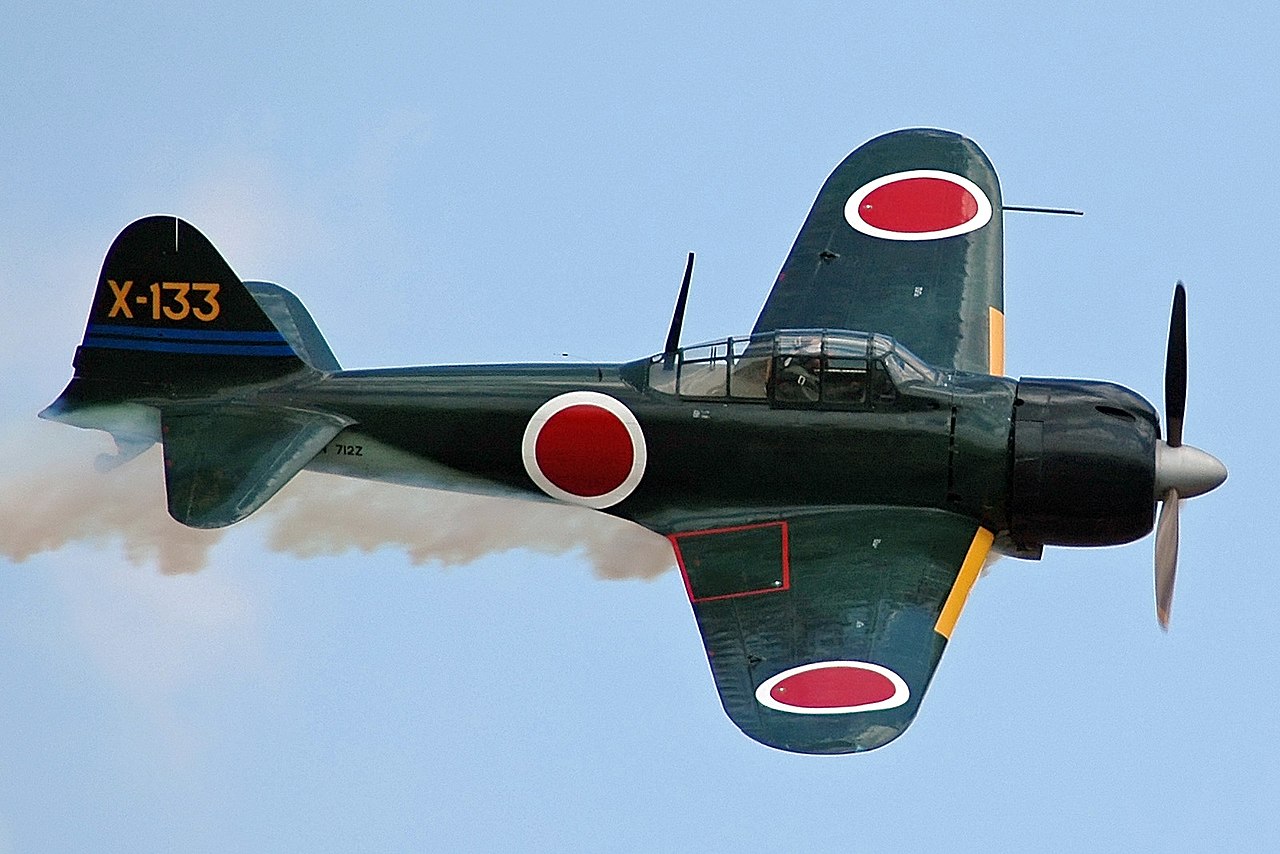
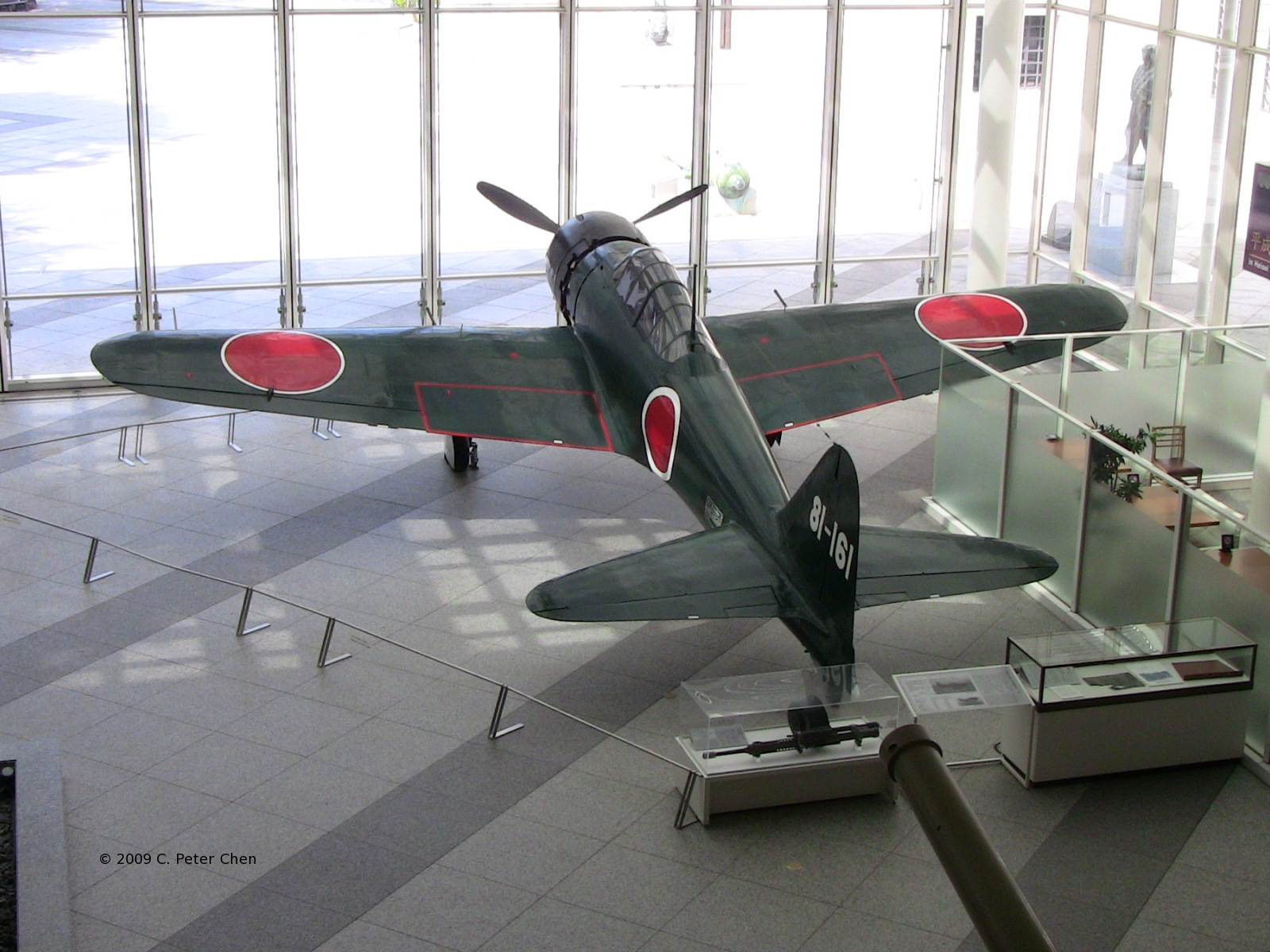
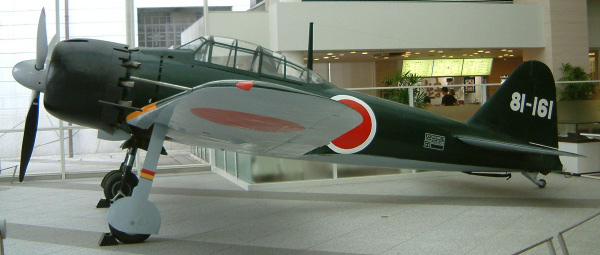




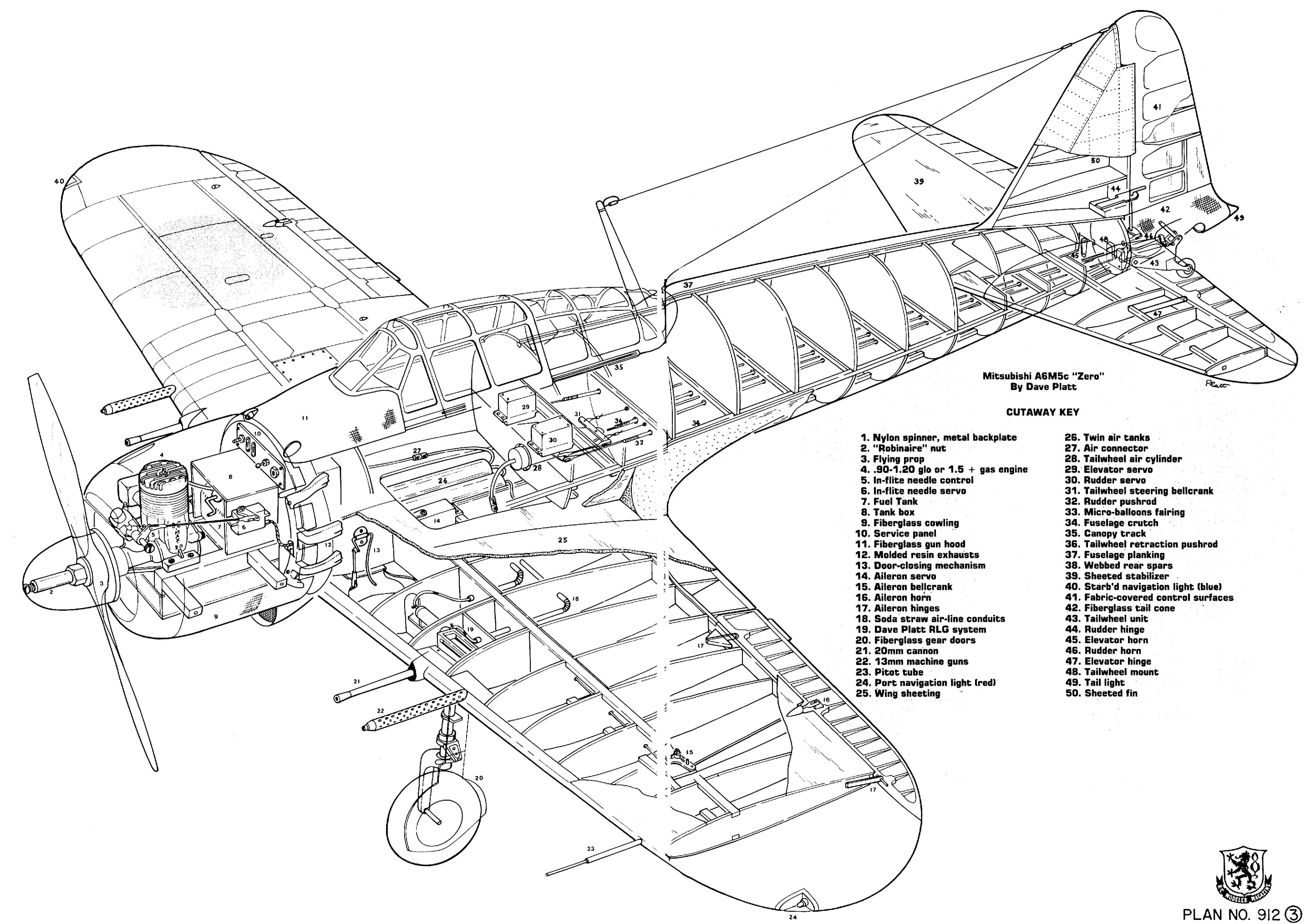

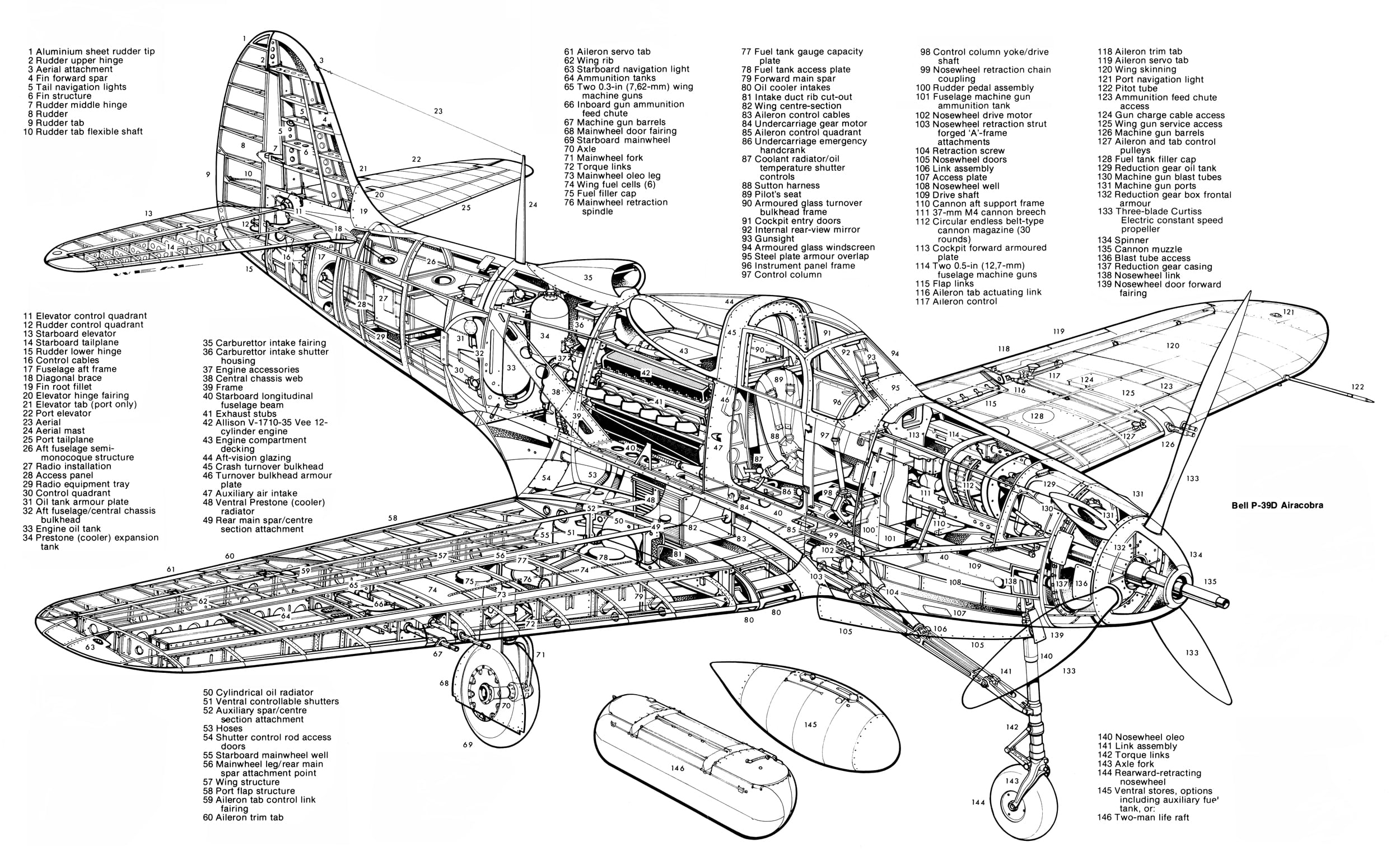



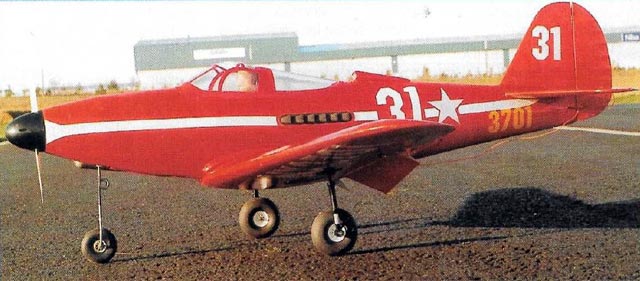

















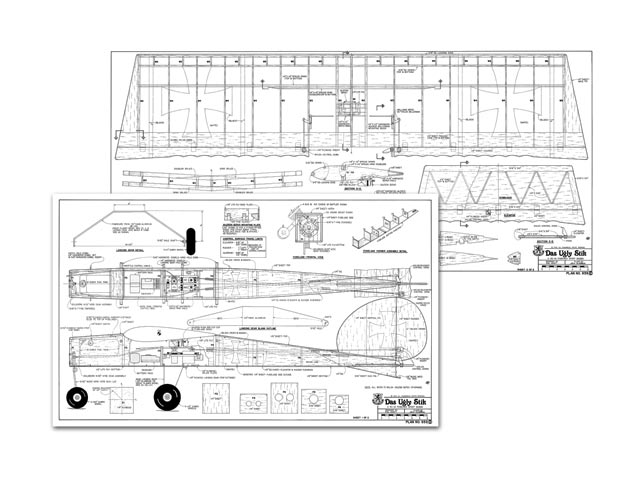


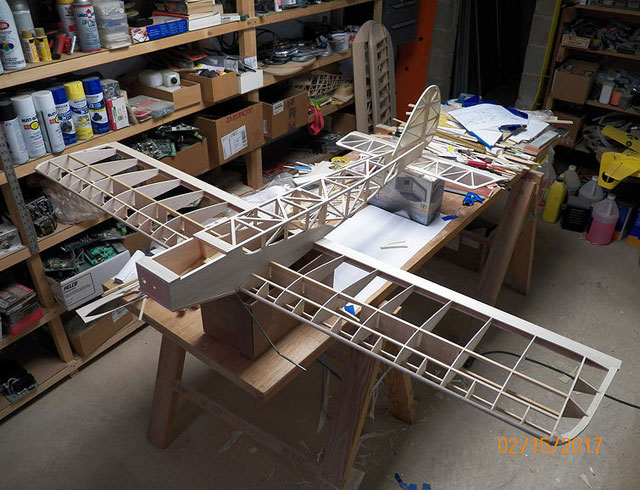
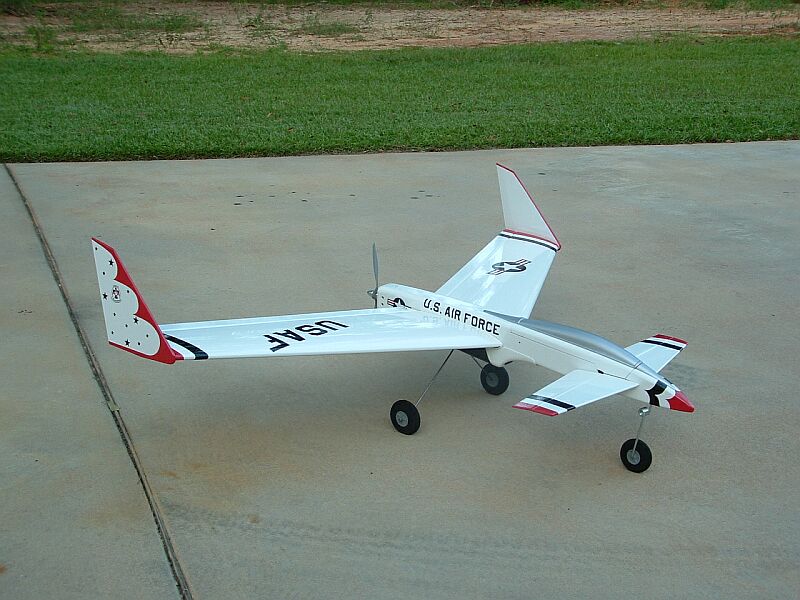
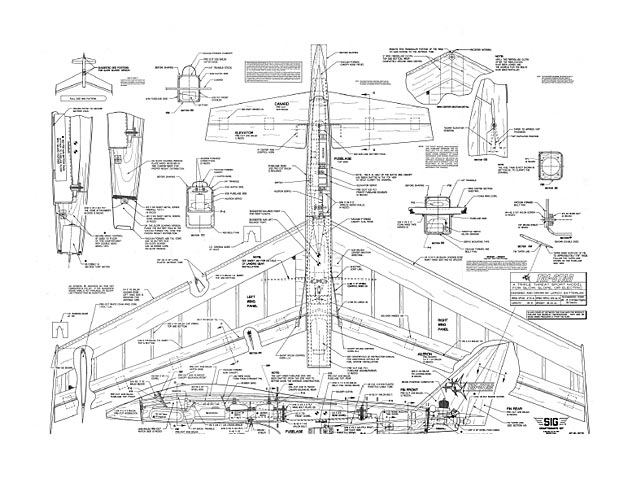

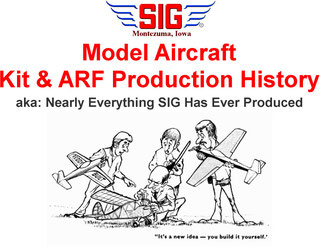




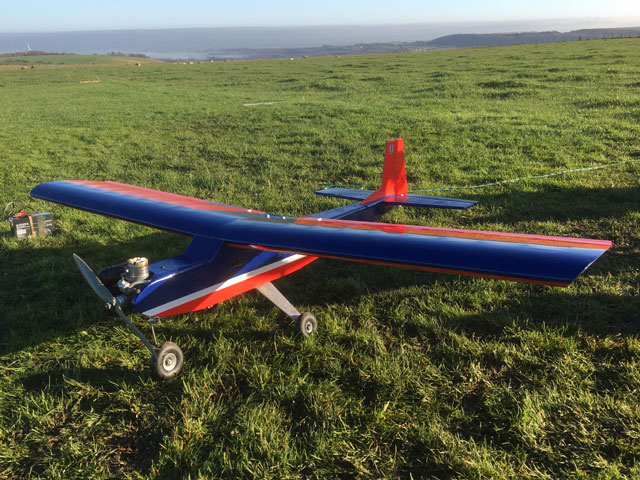
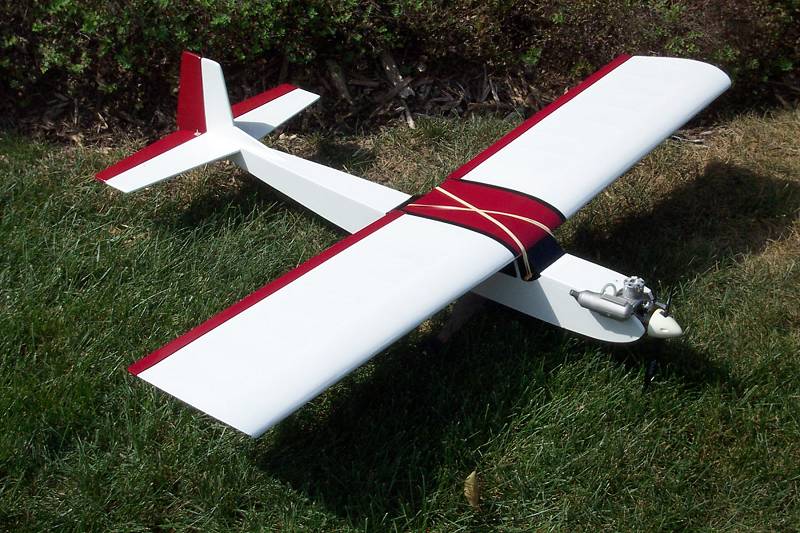
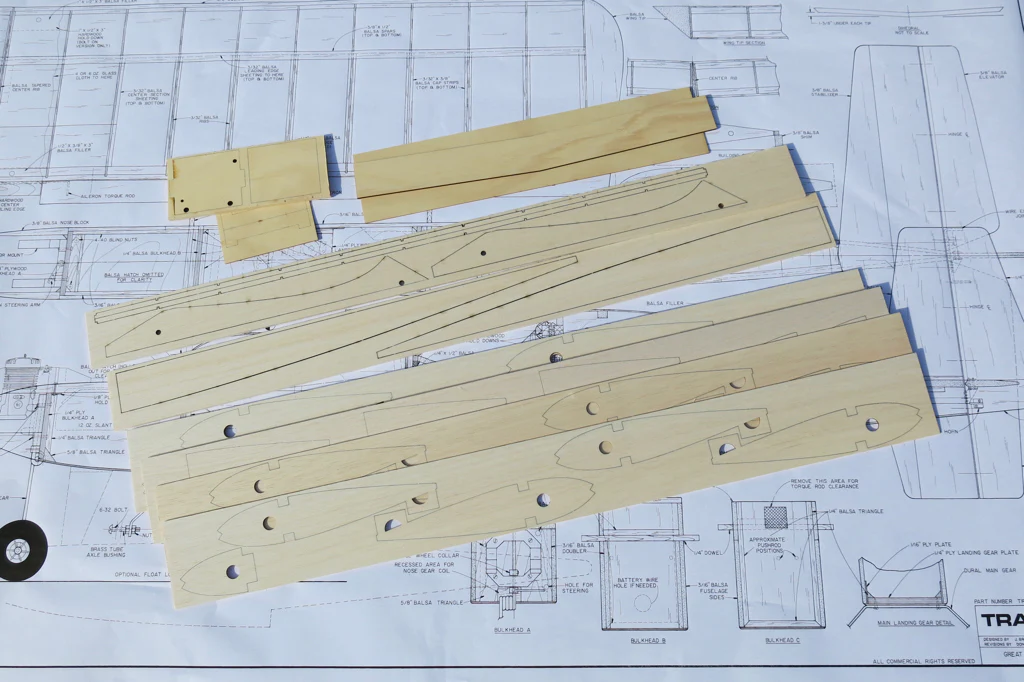

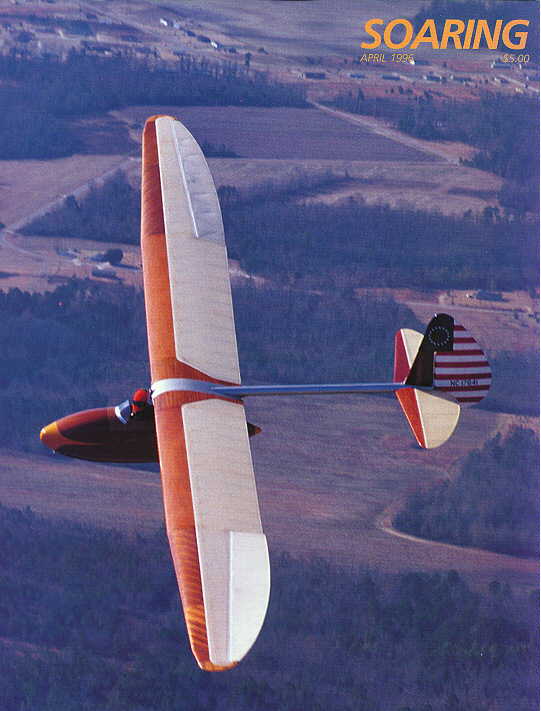



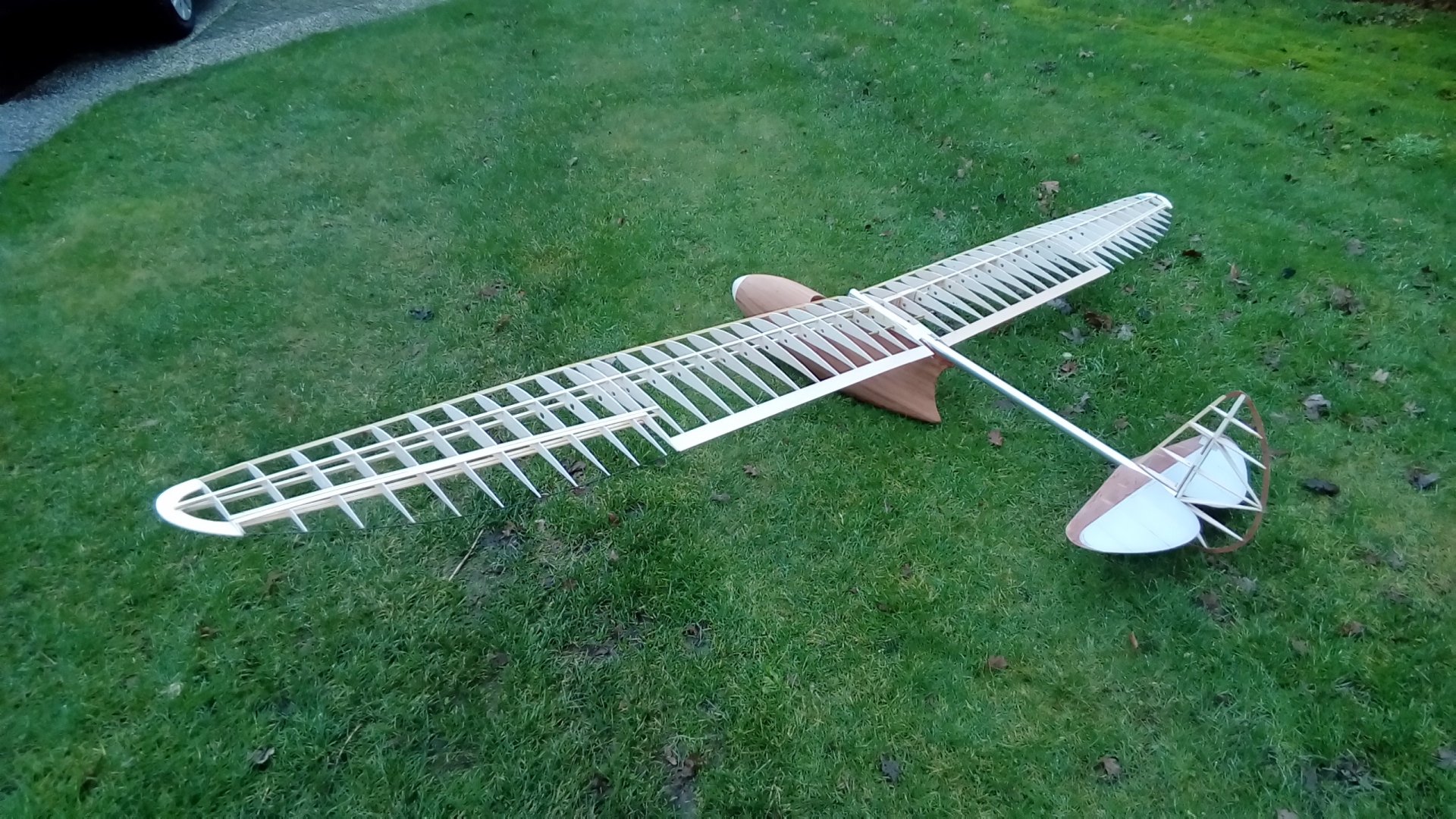
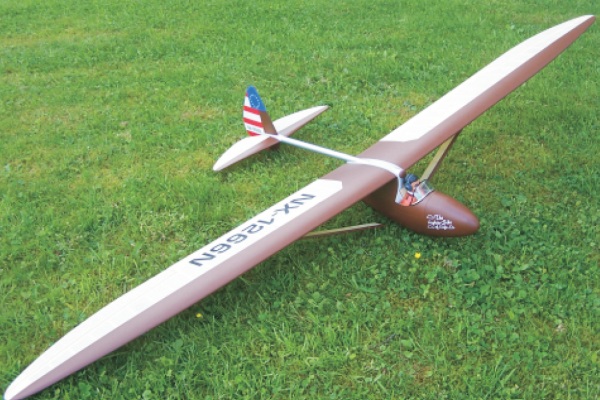

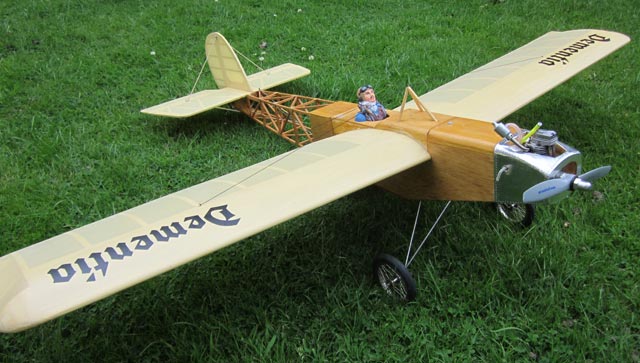


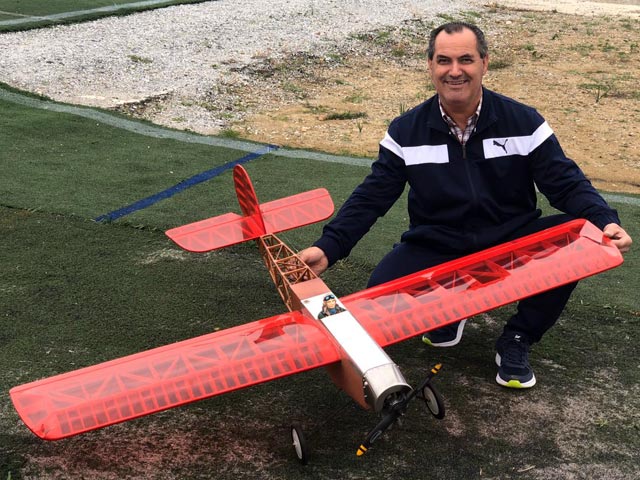
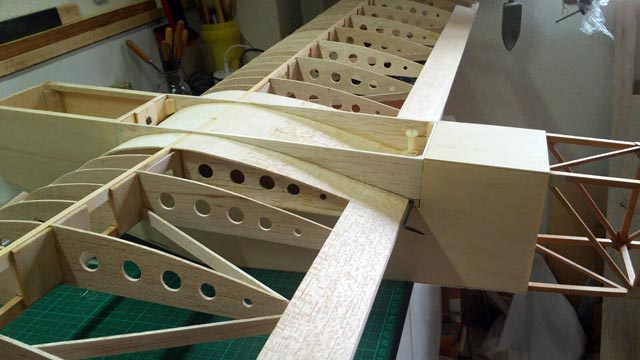


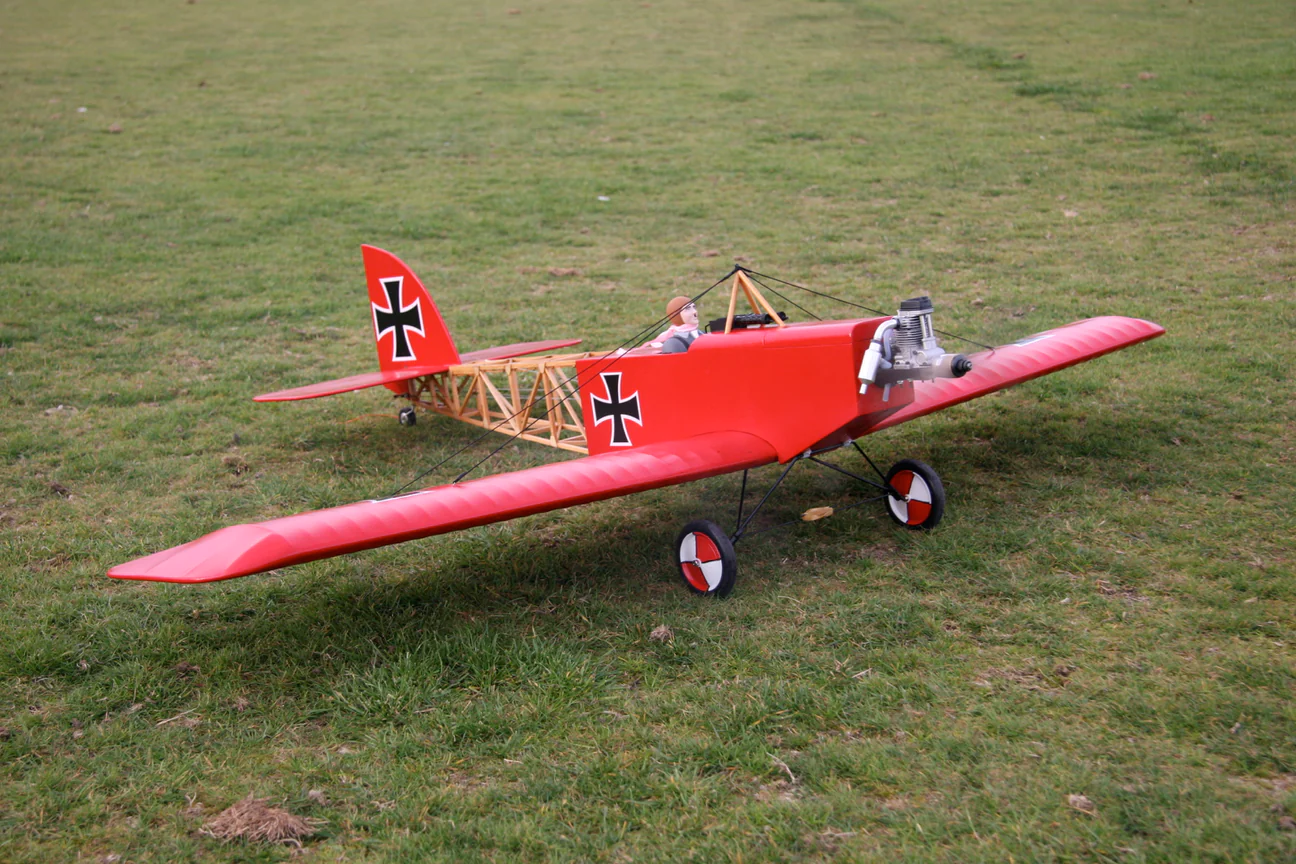
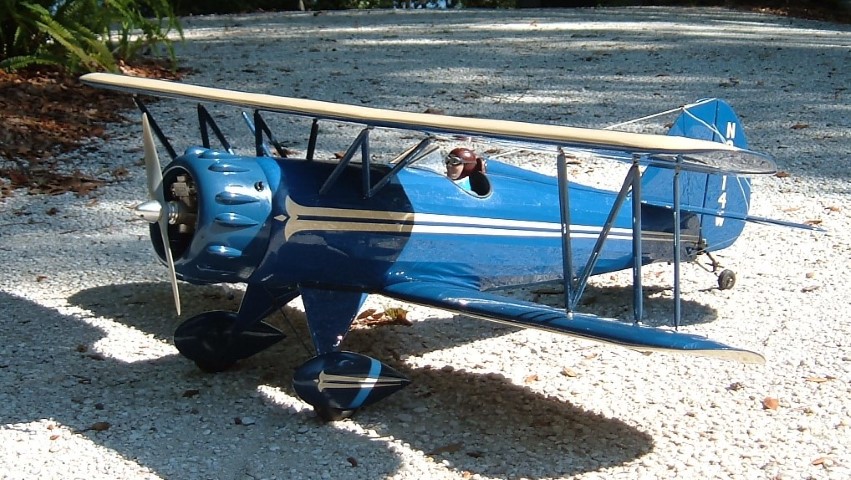
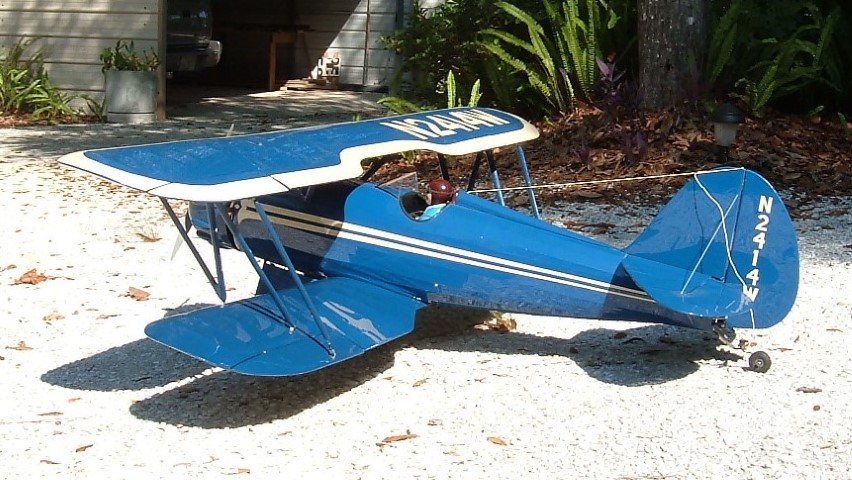

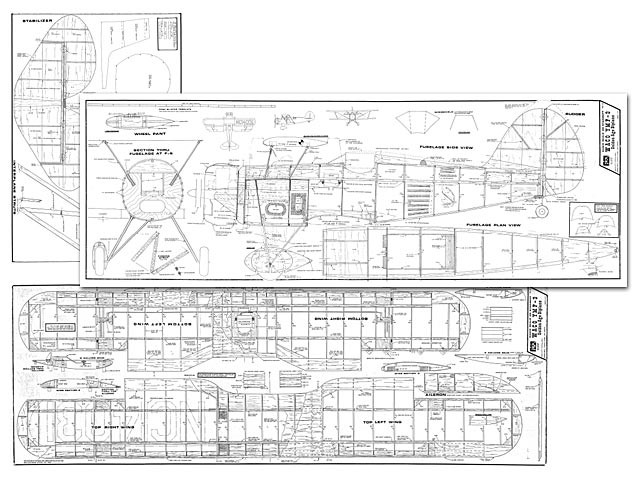
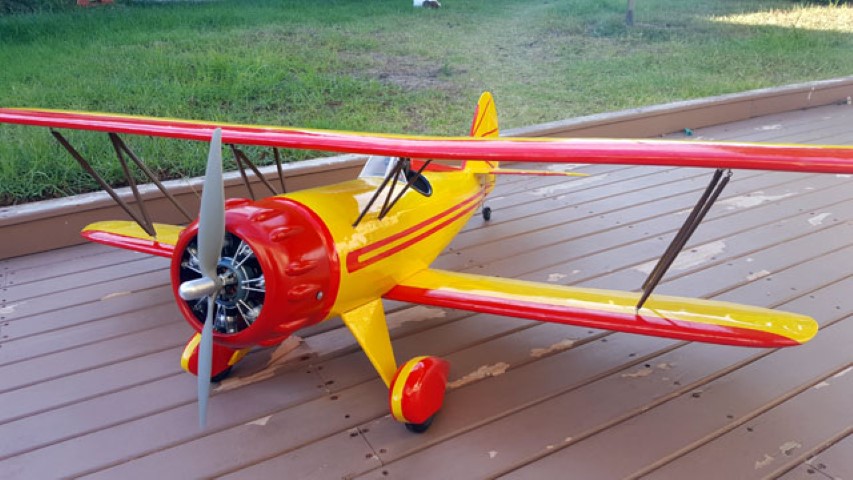
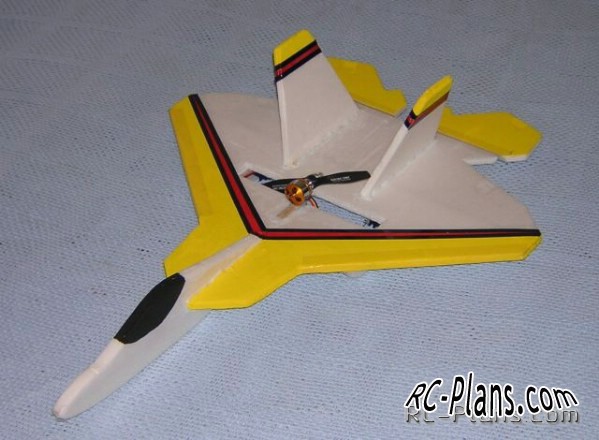
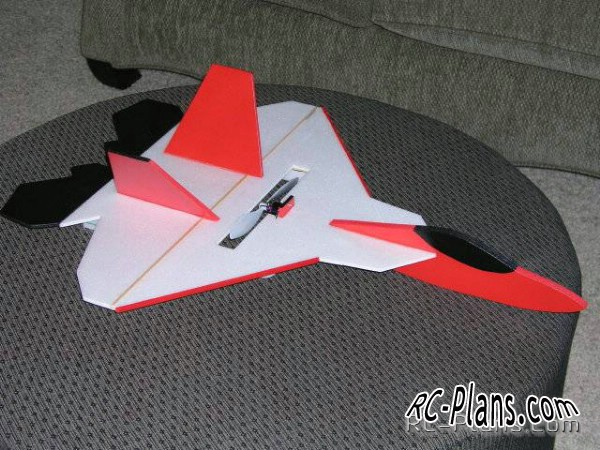
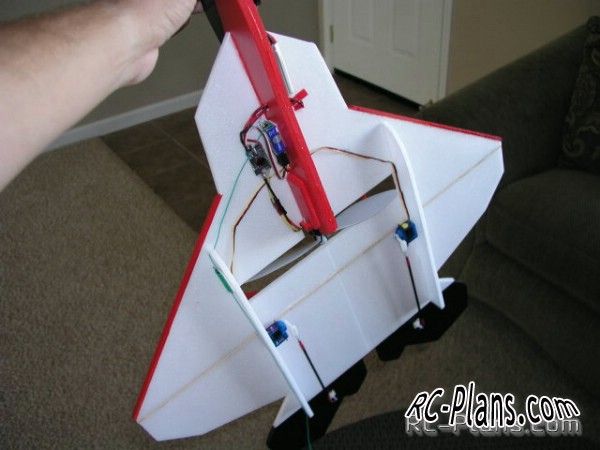
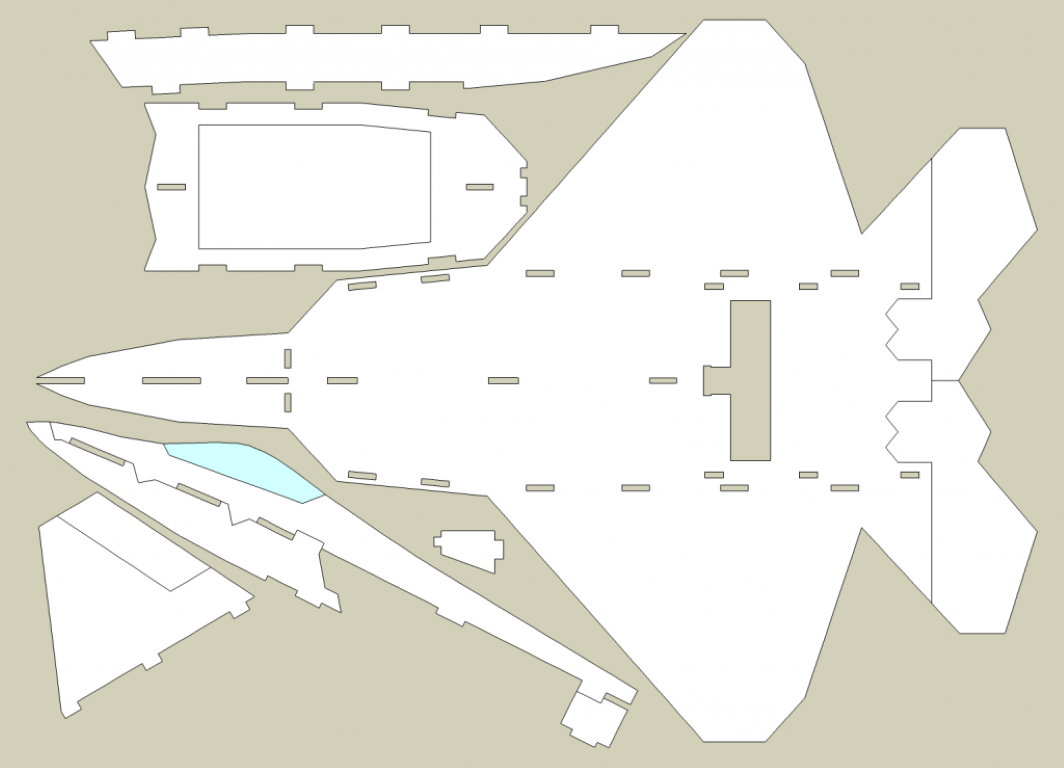







.jpg)
.jpg)
.jpg)
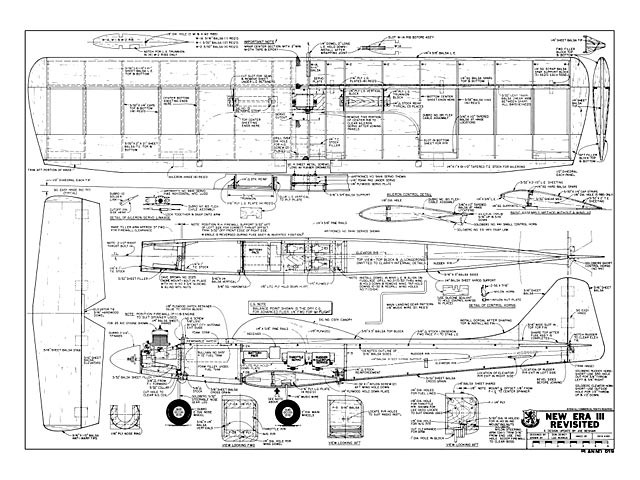

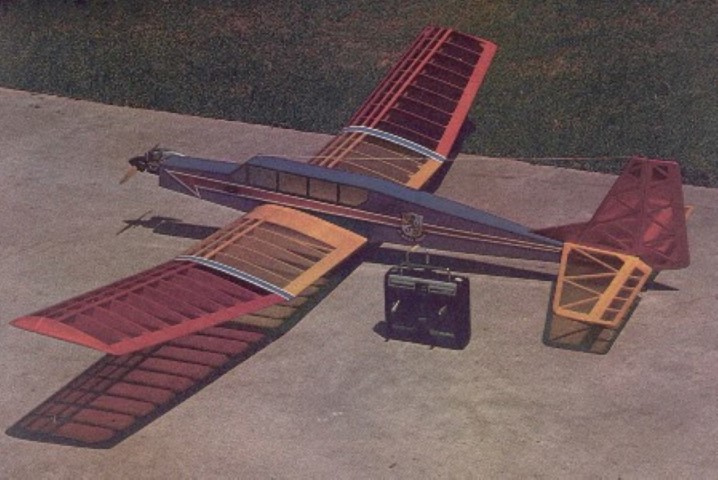


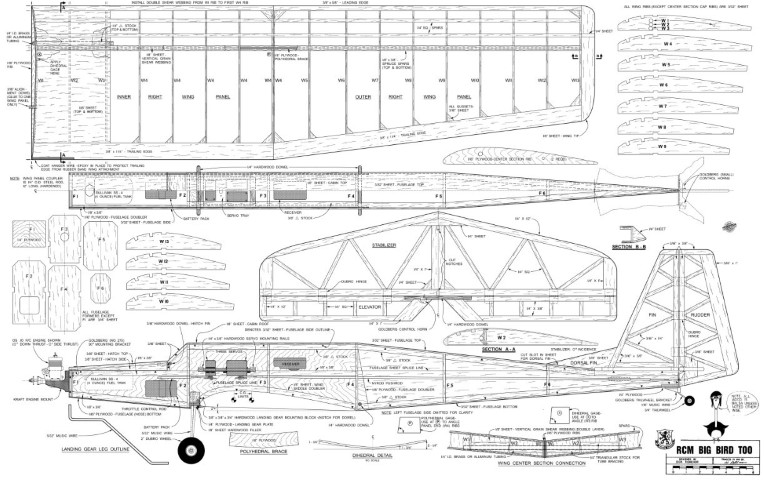
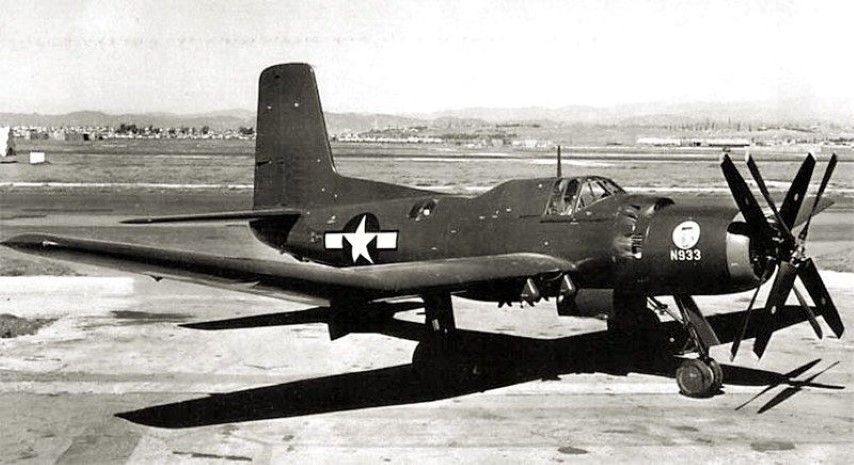
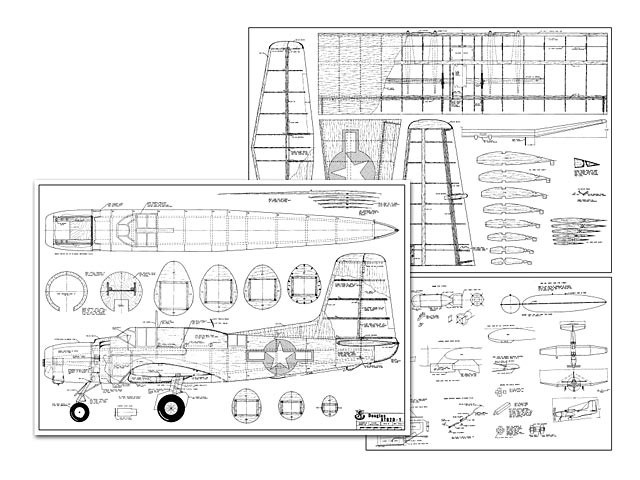
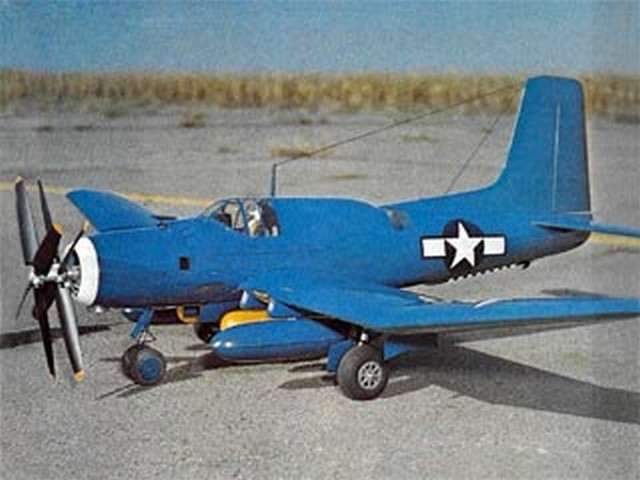

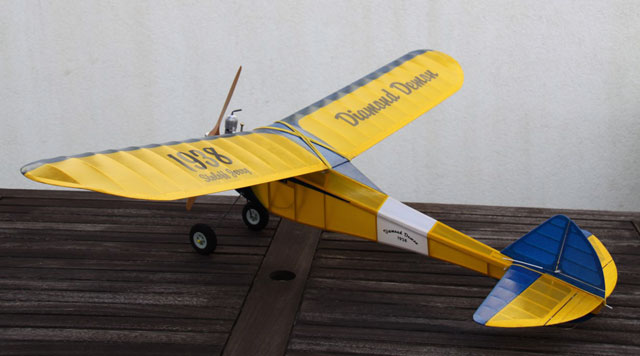
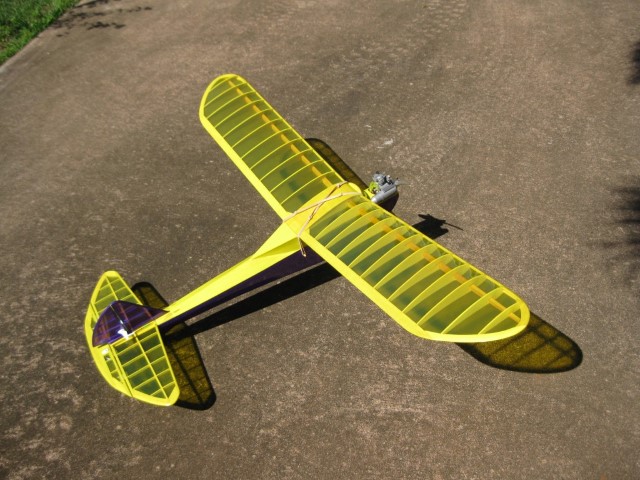
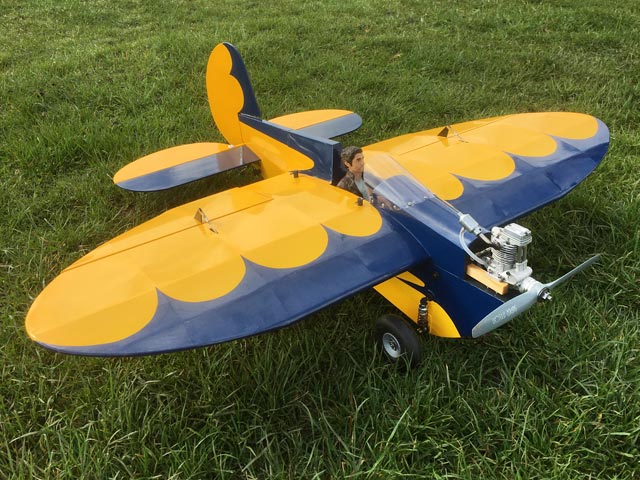


 by Larry
by Larry